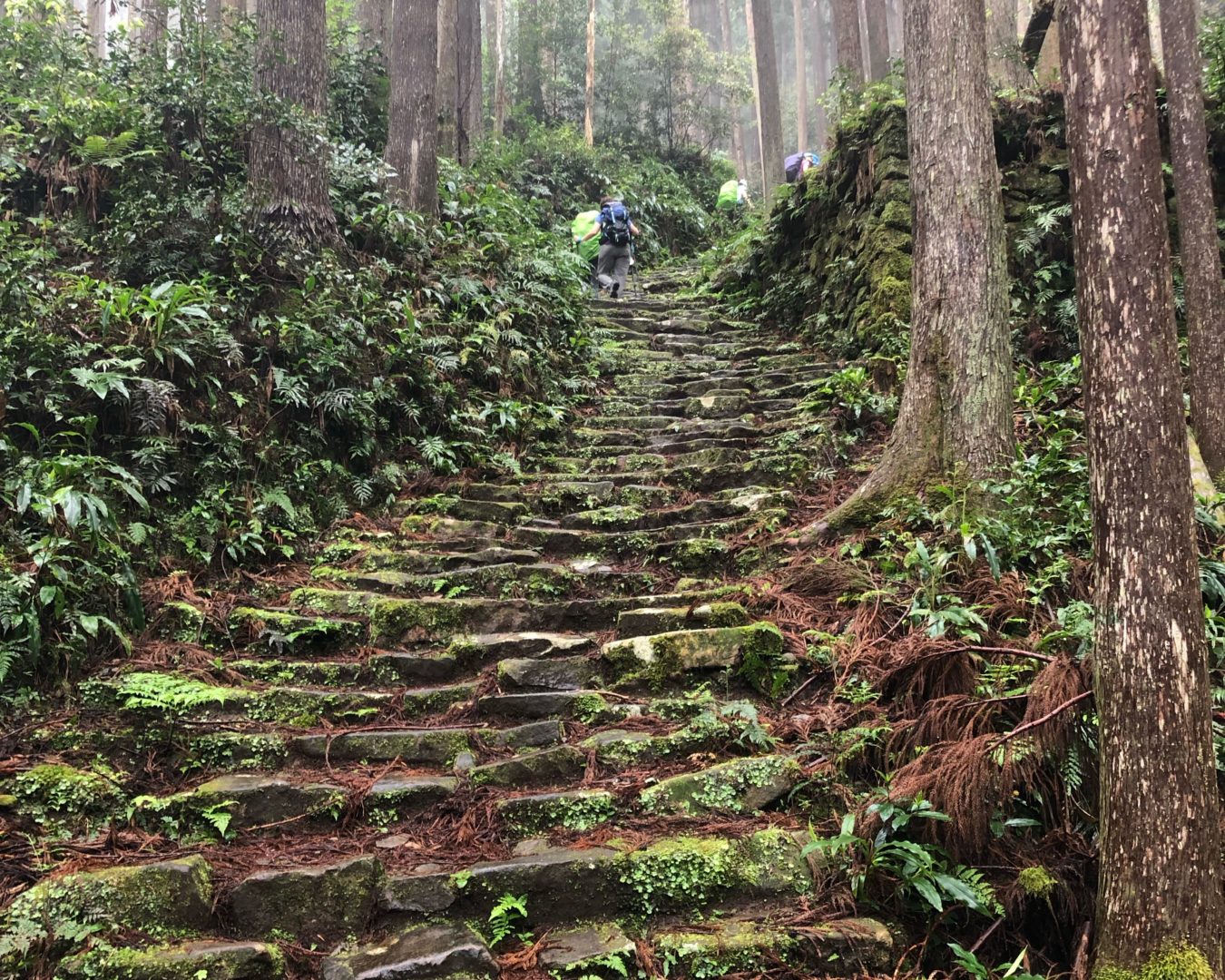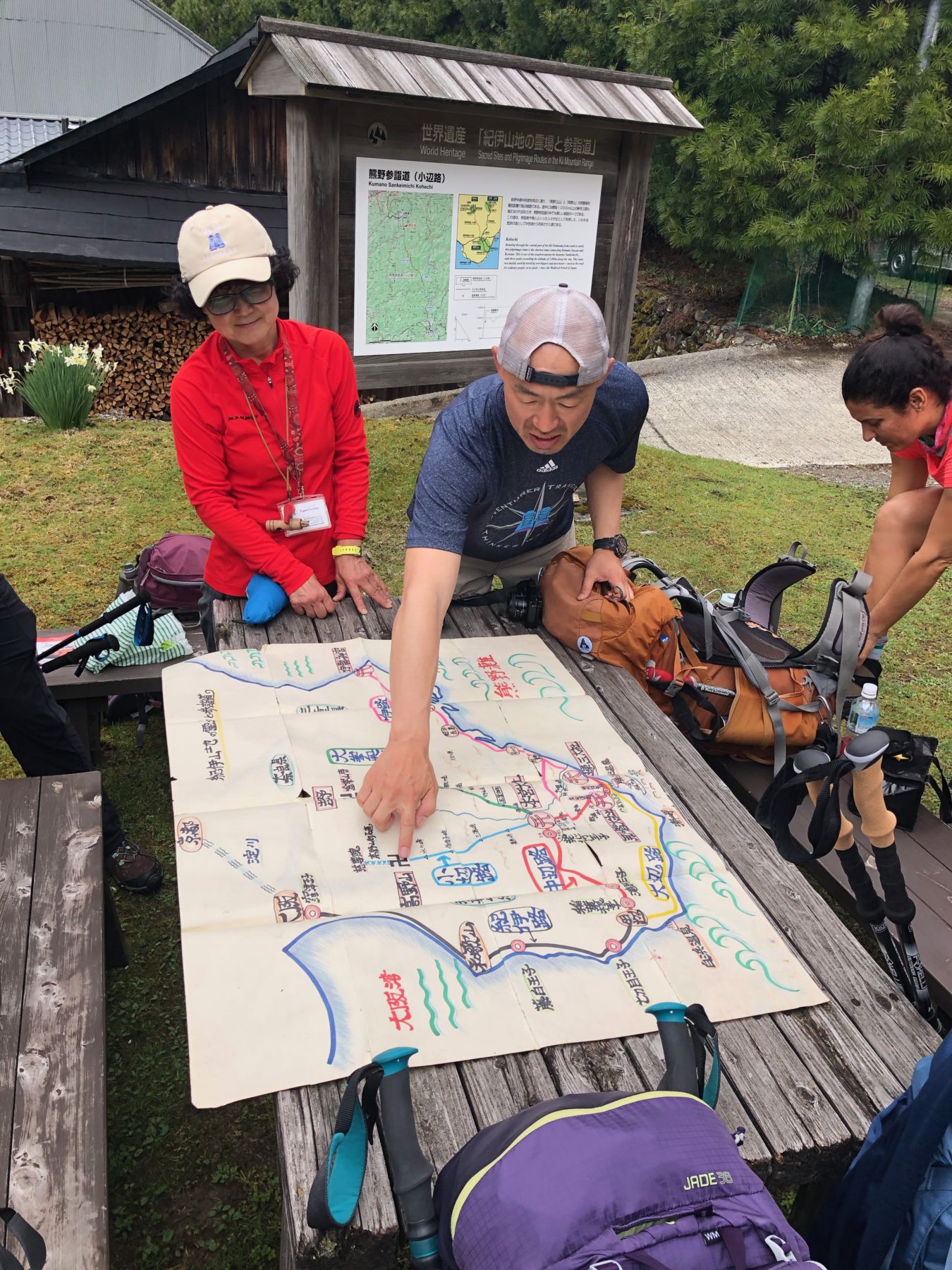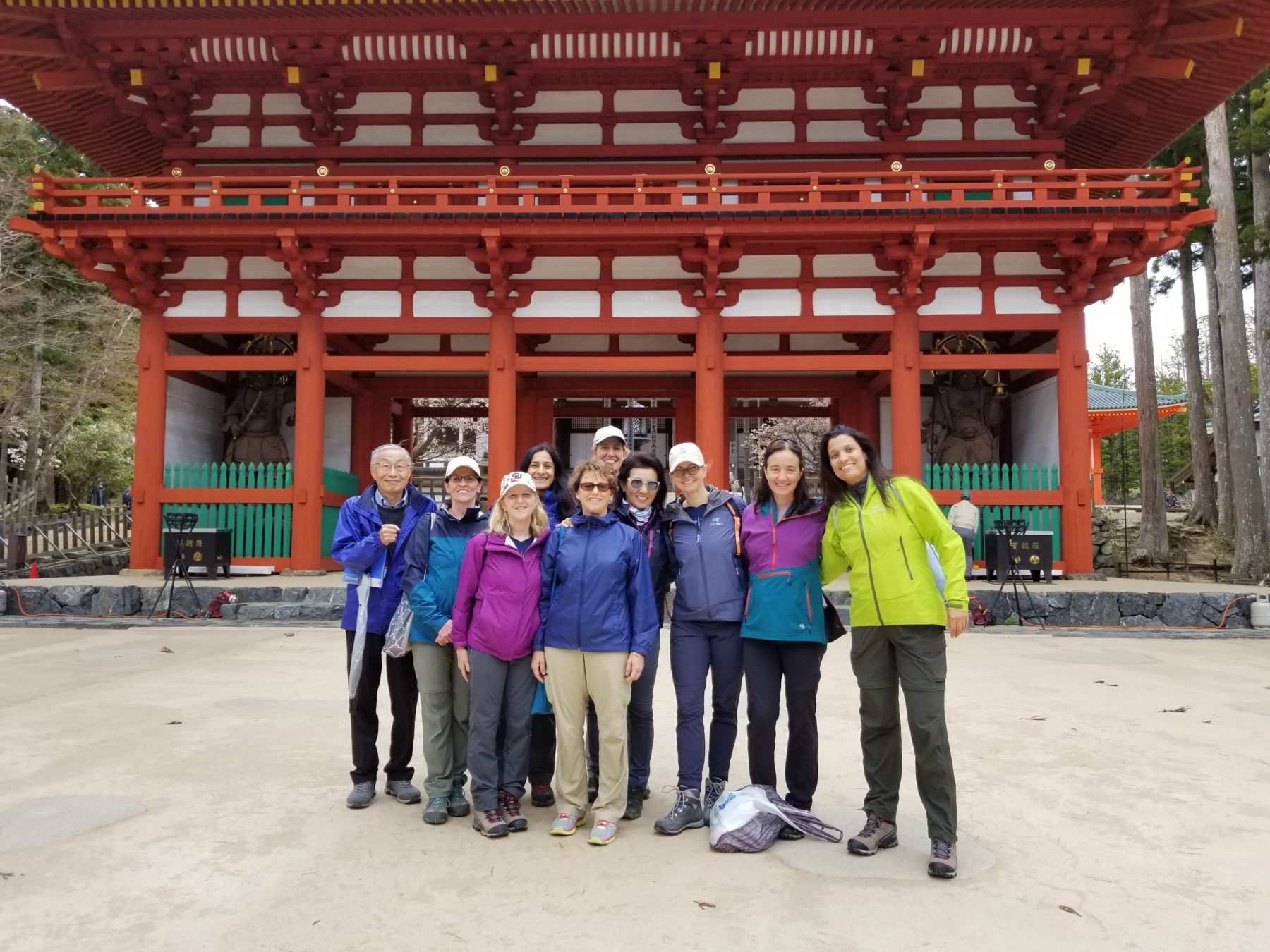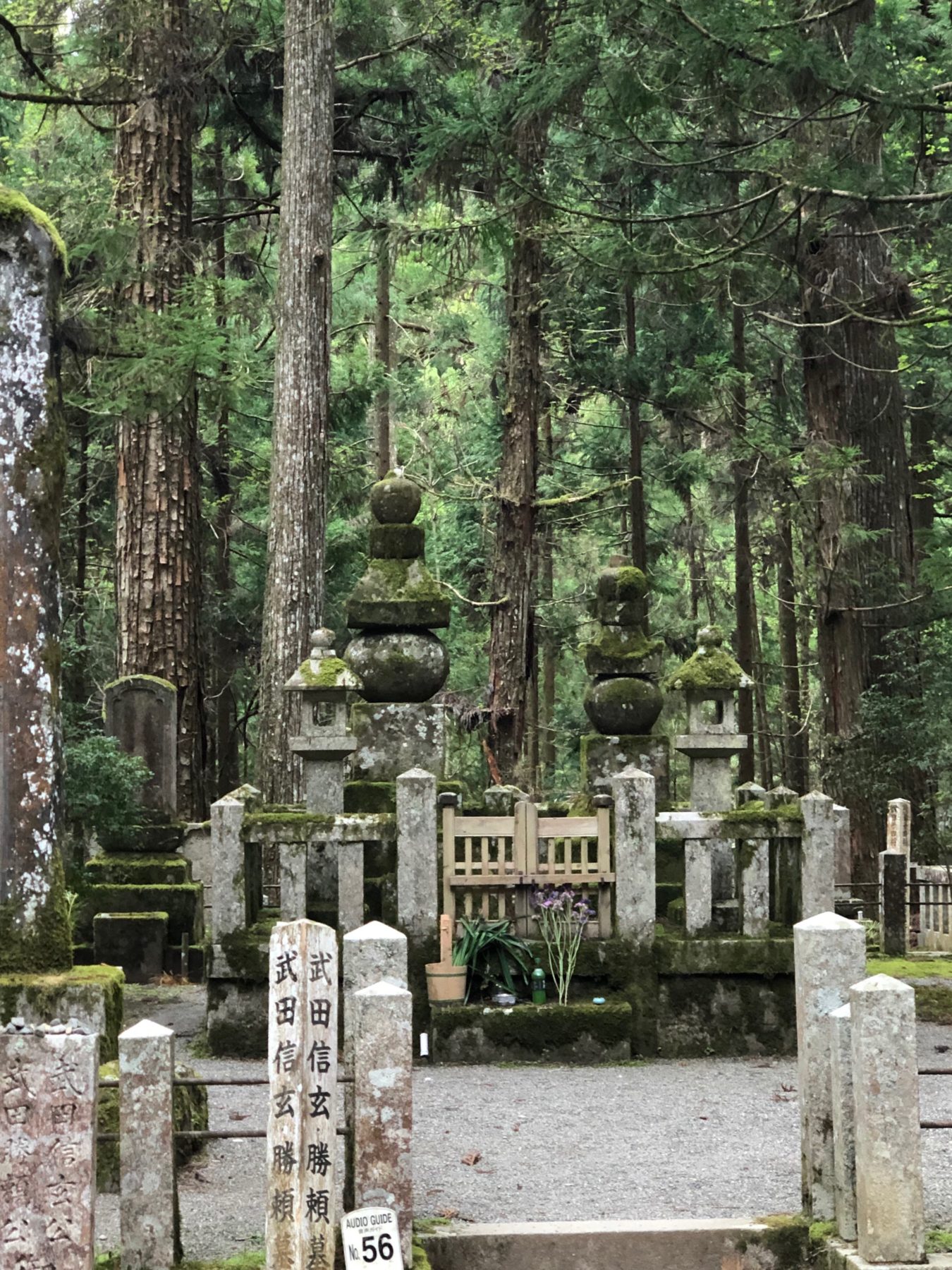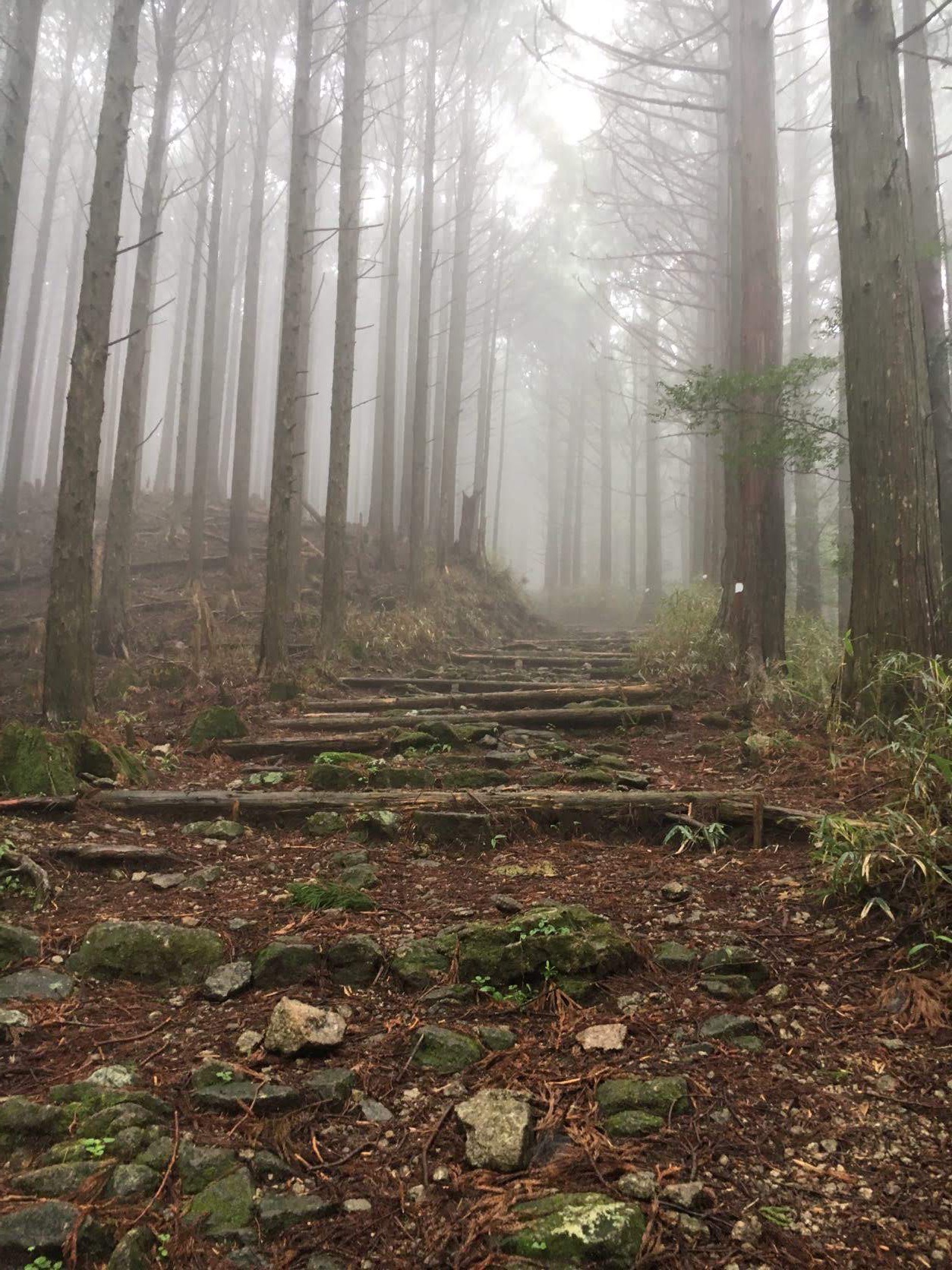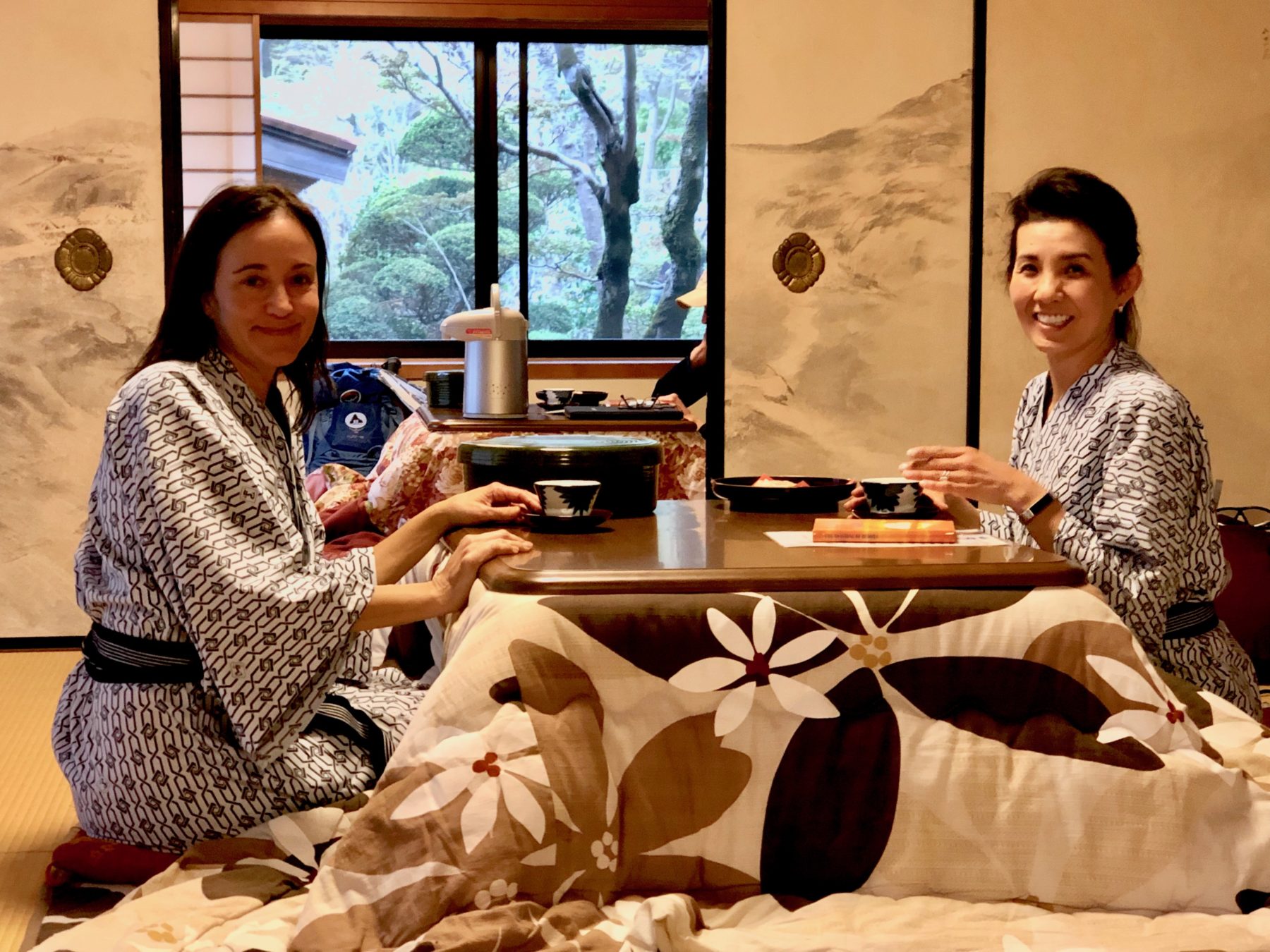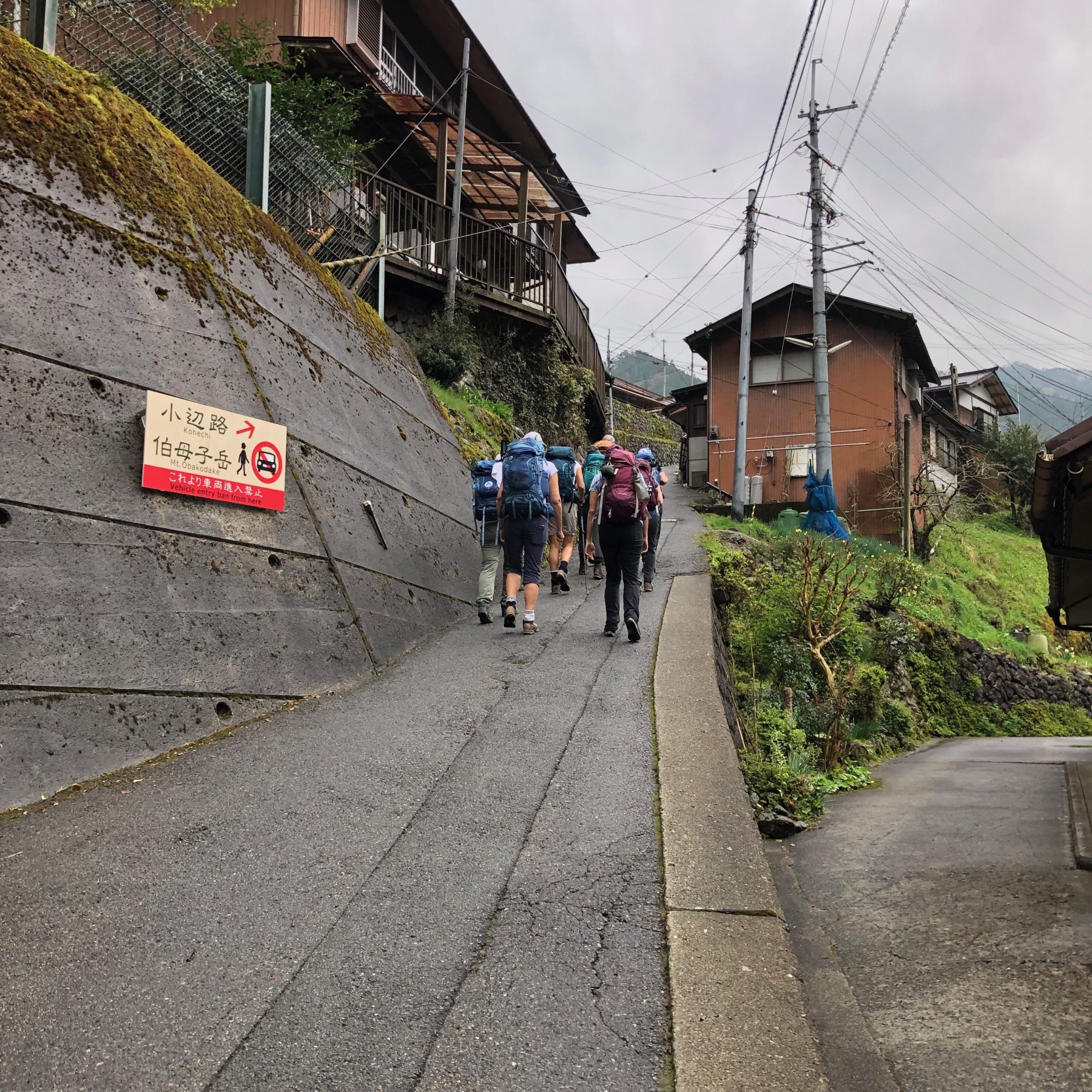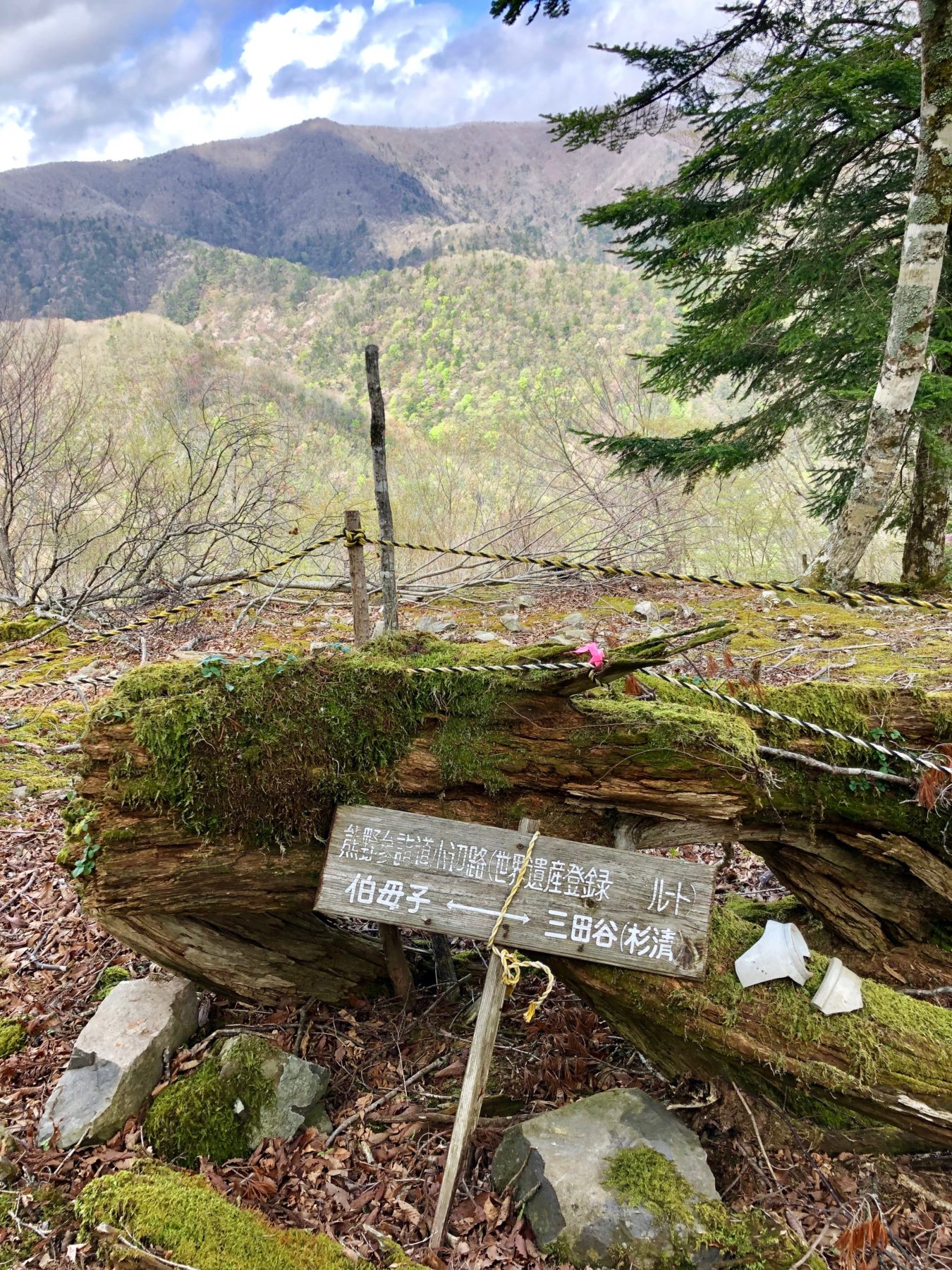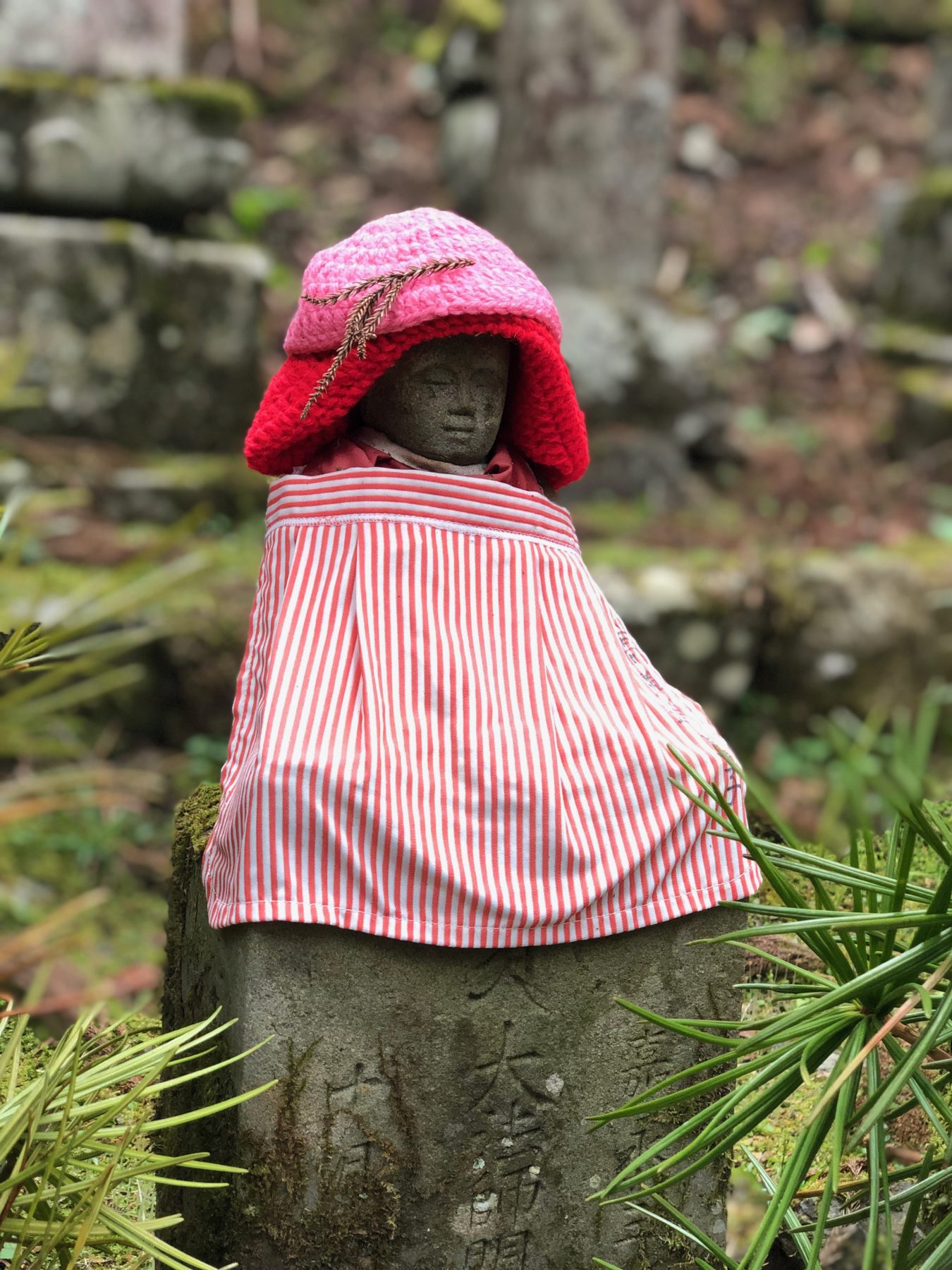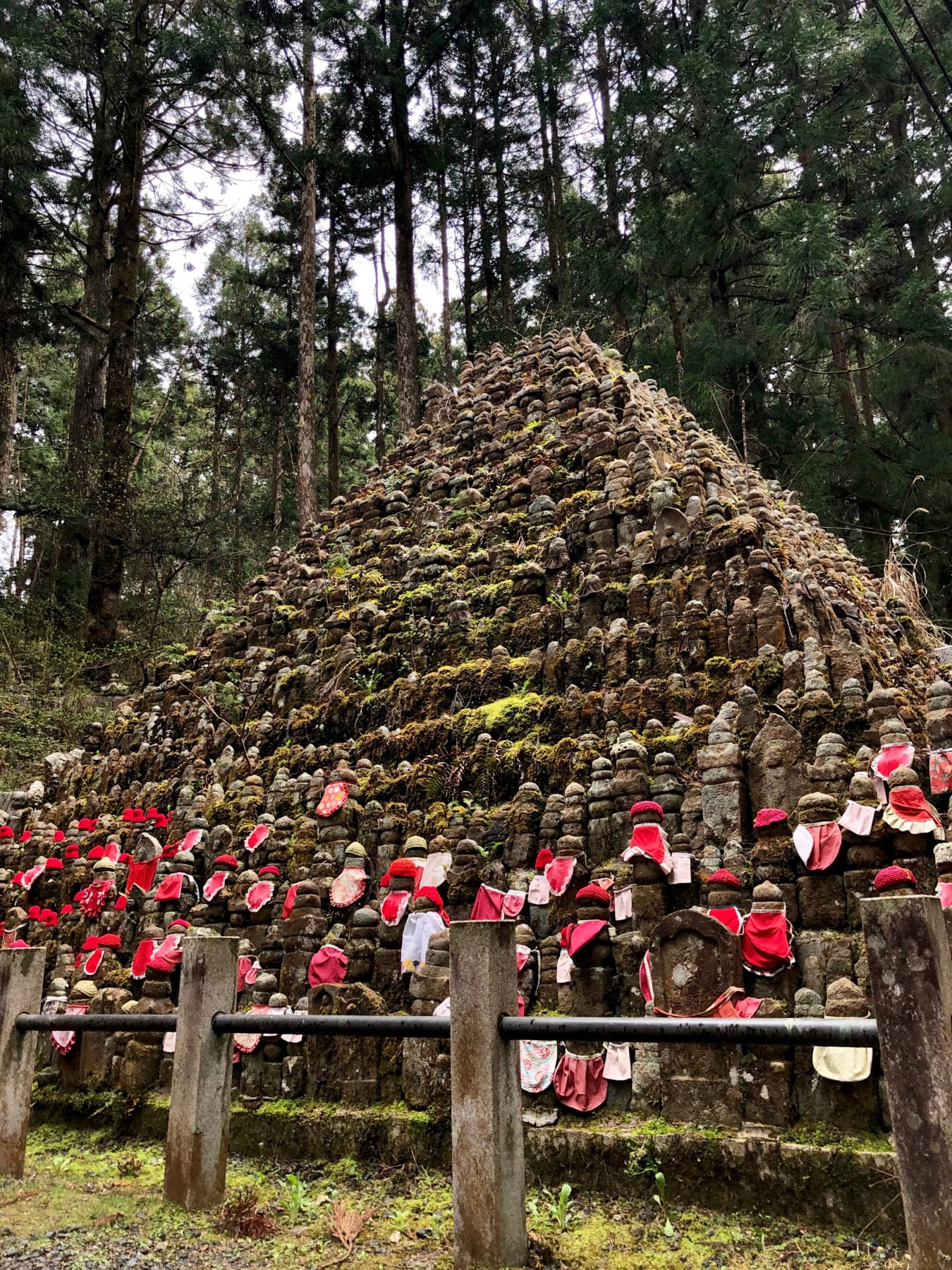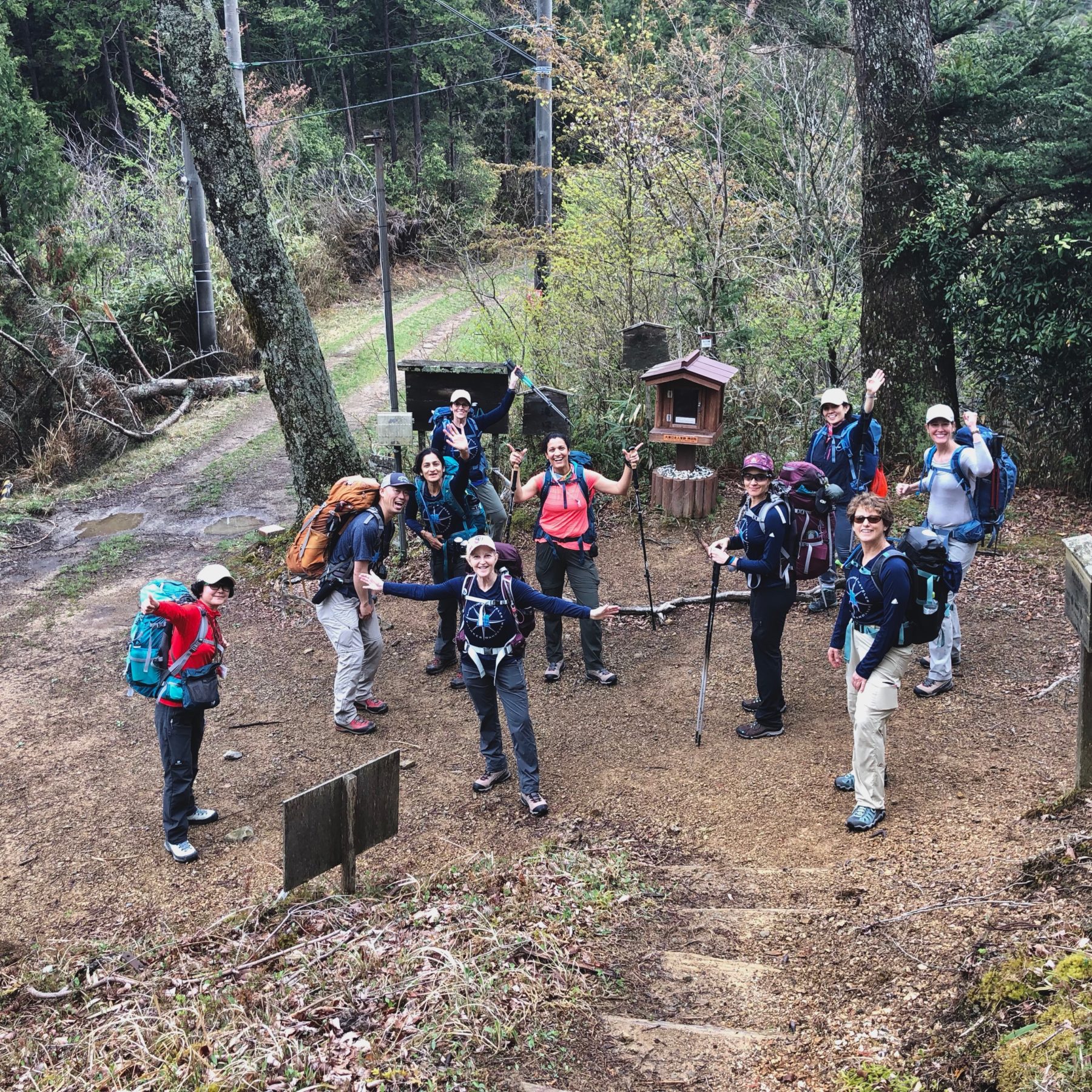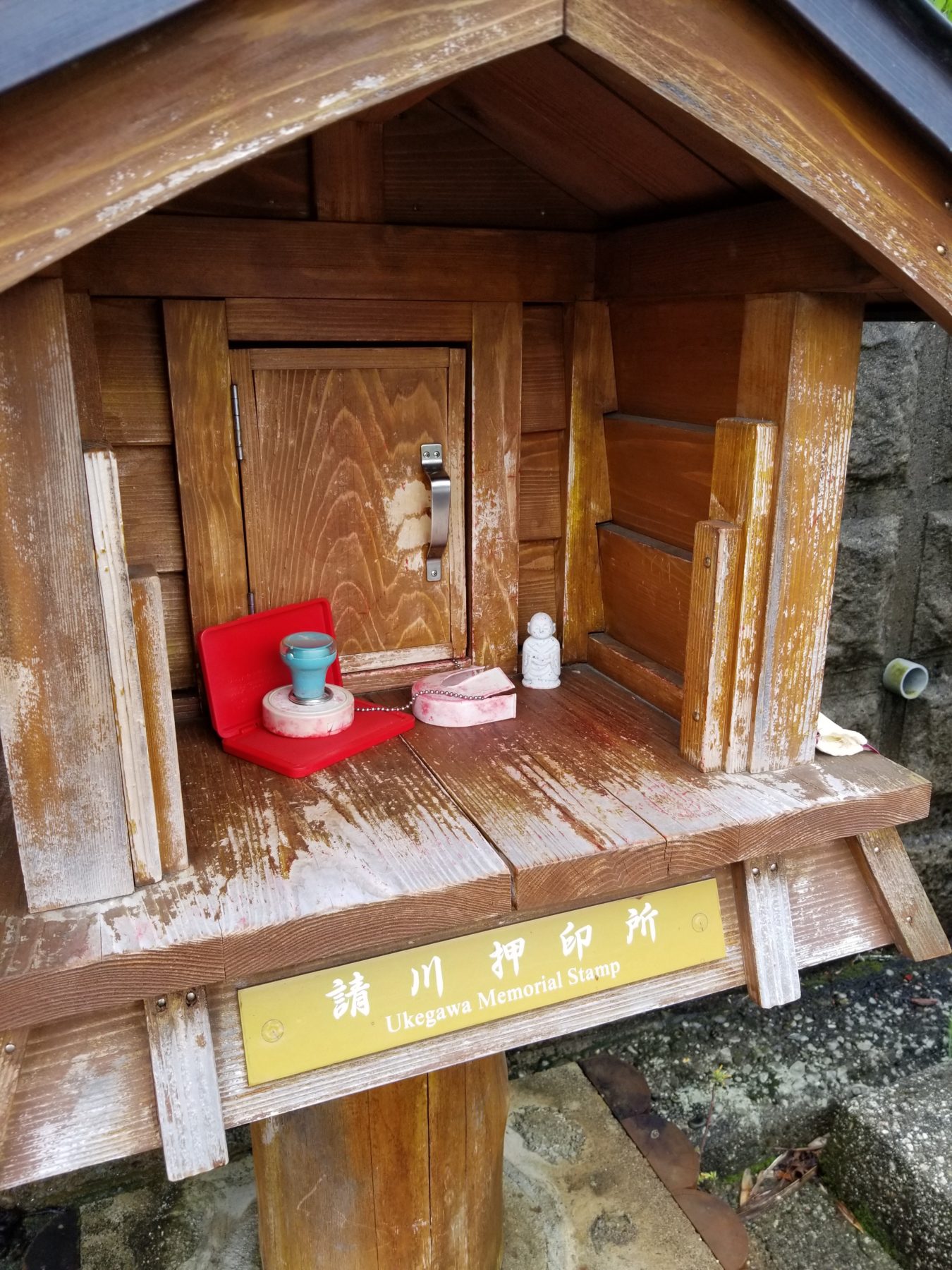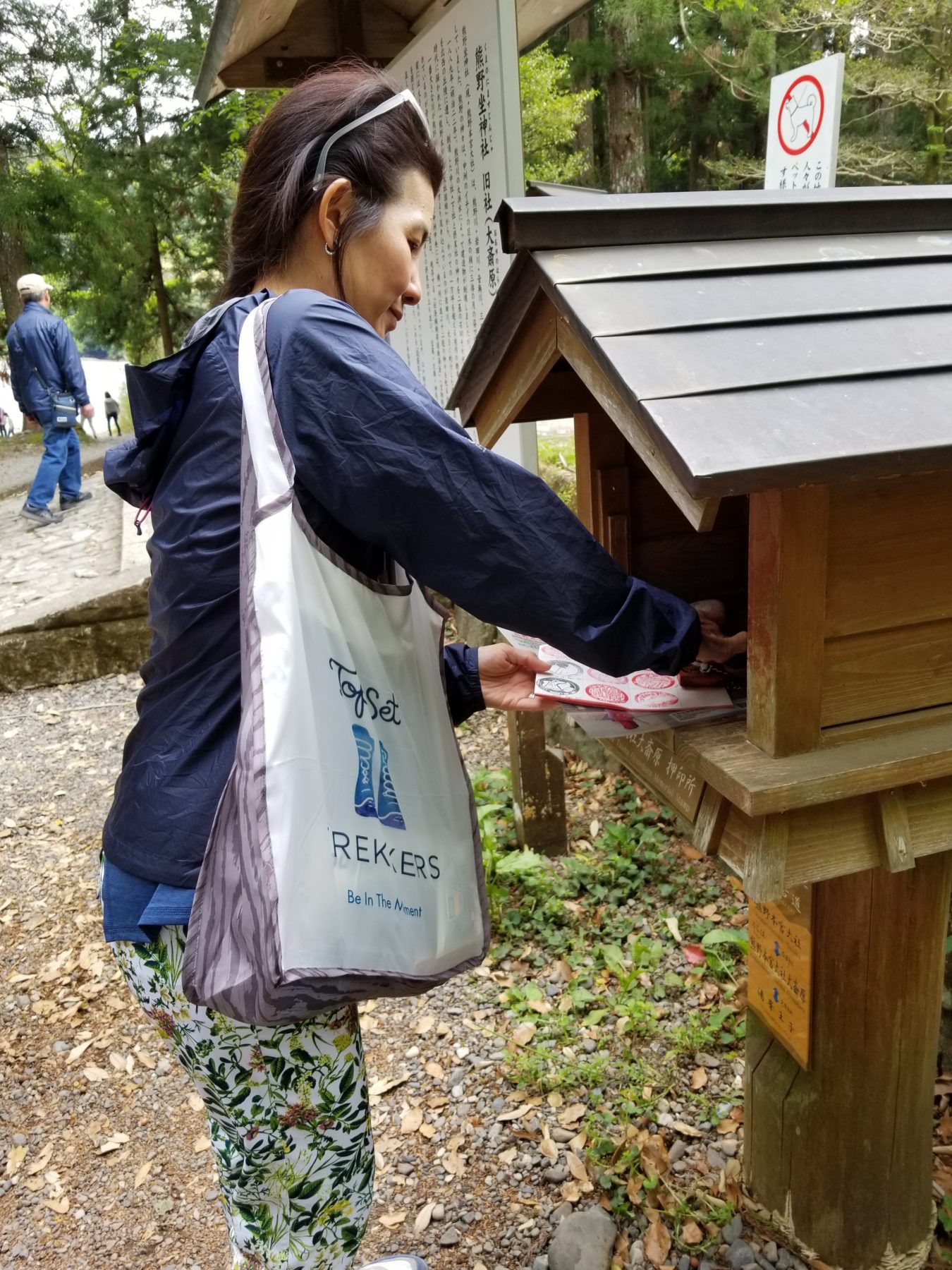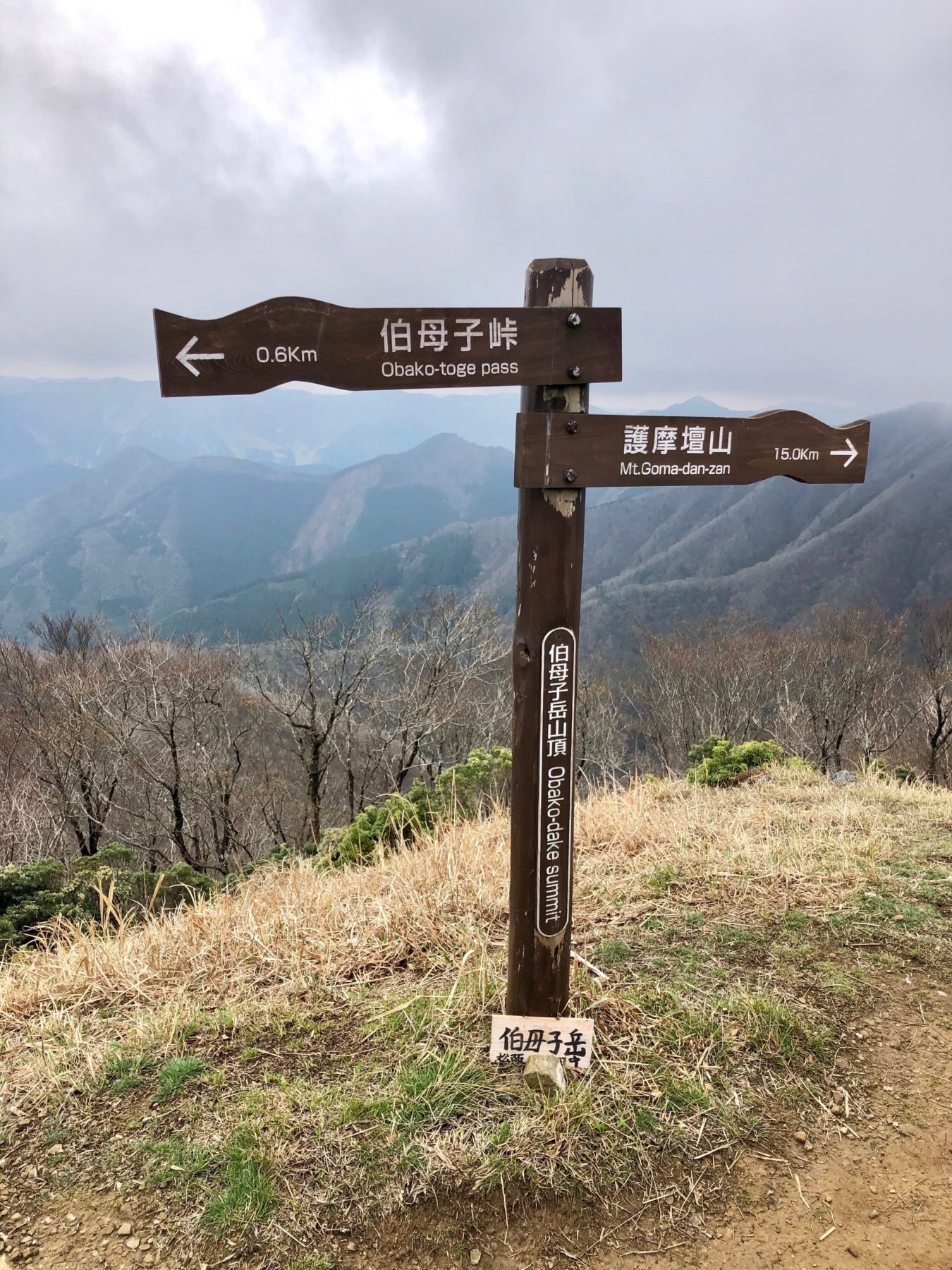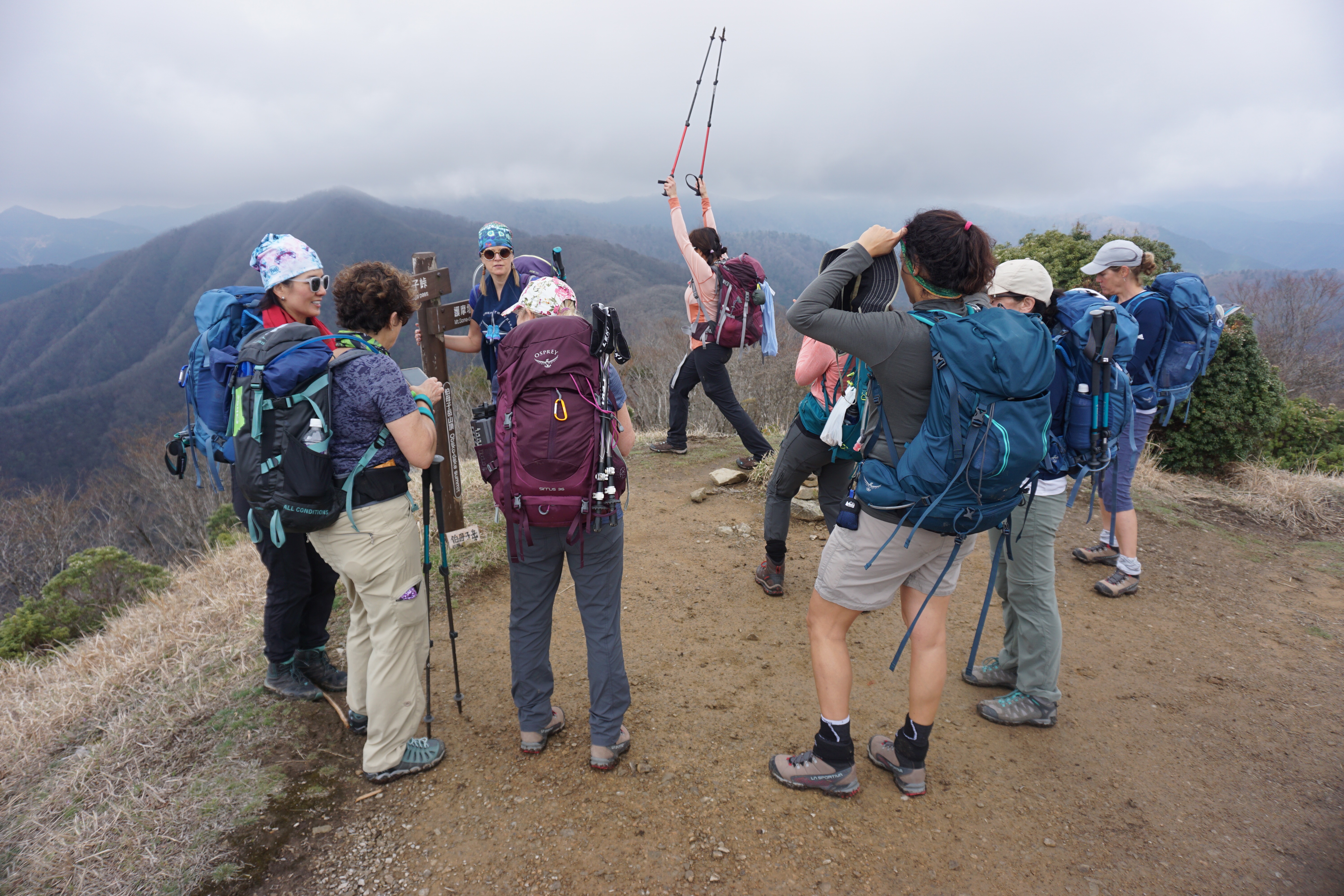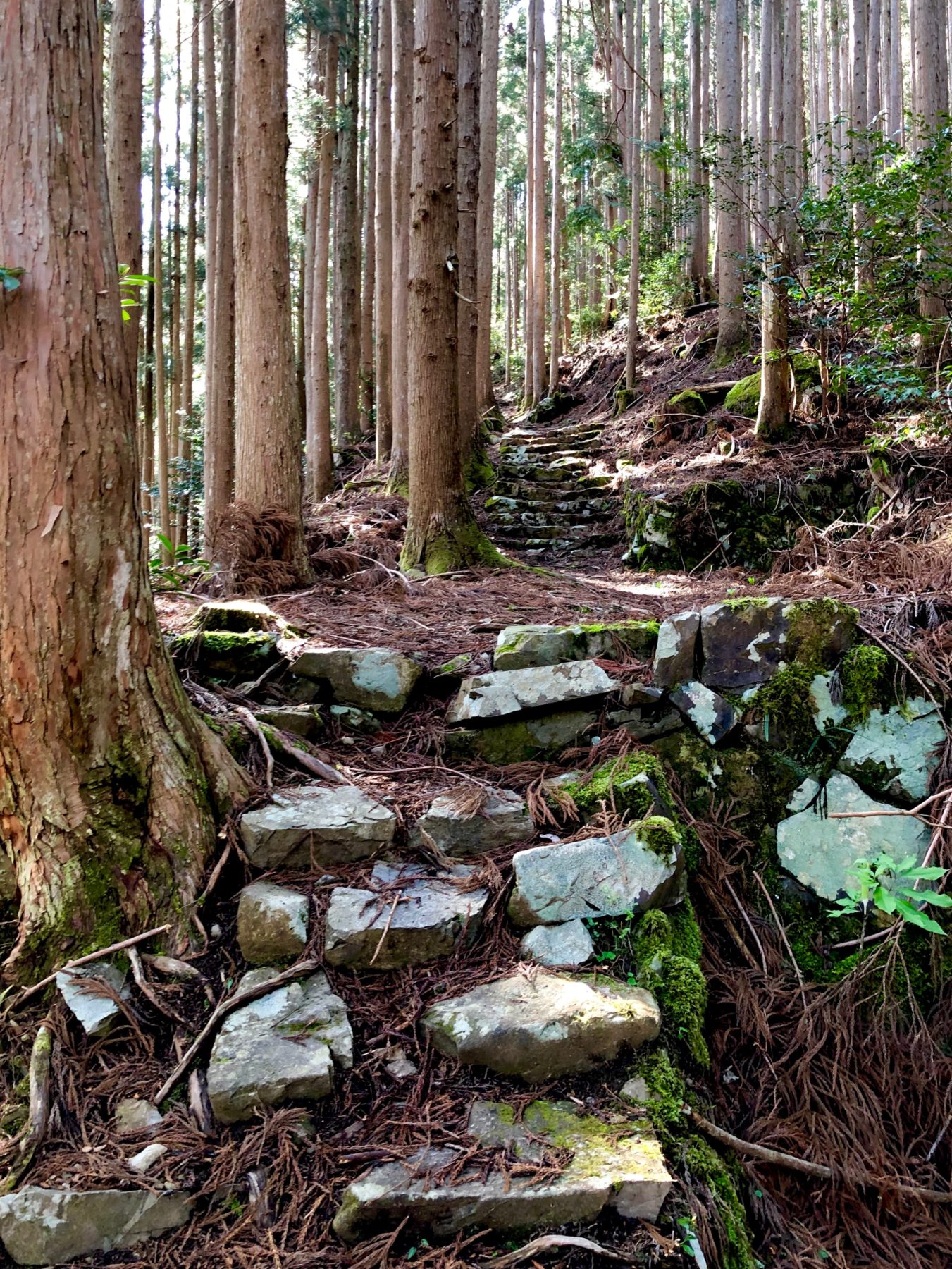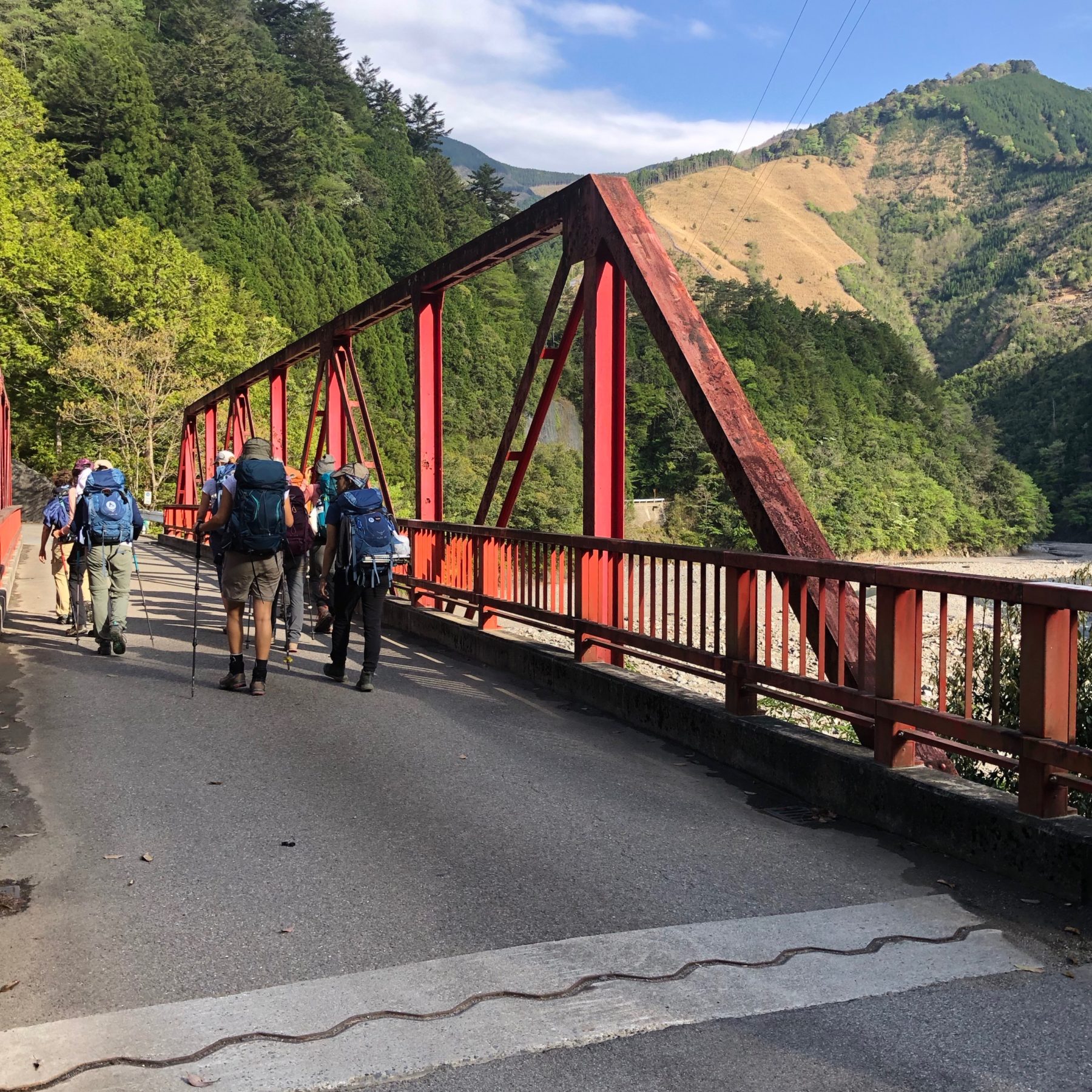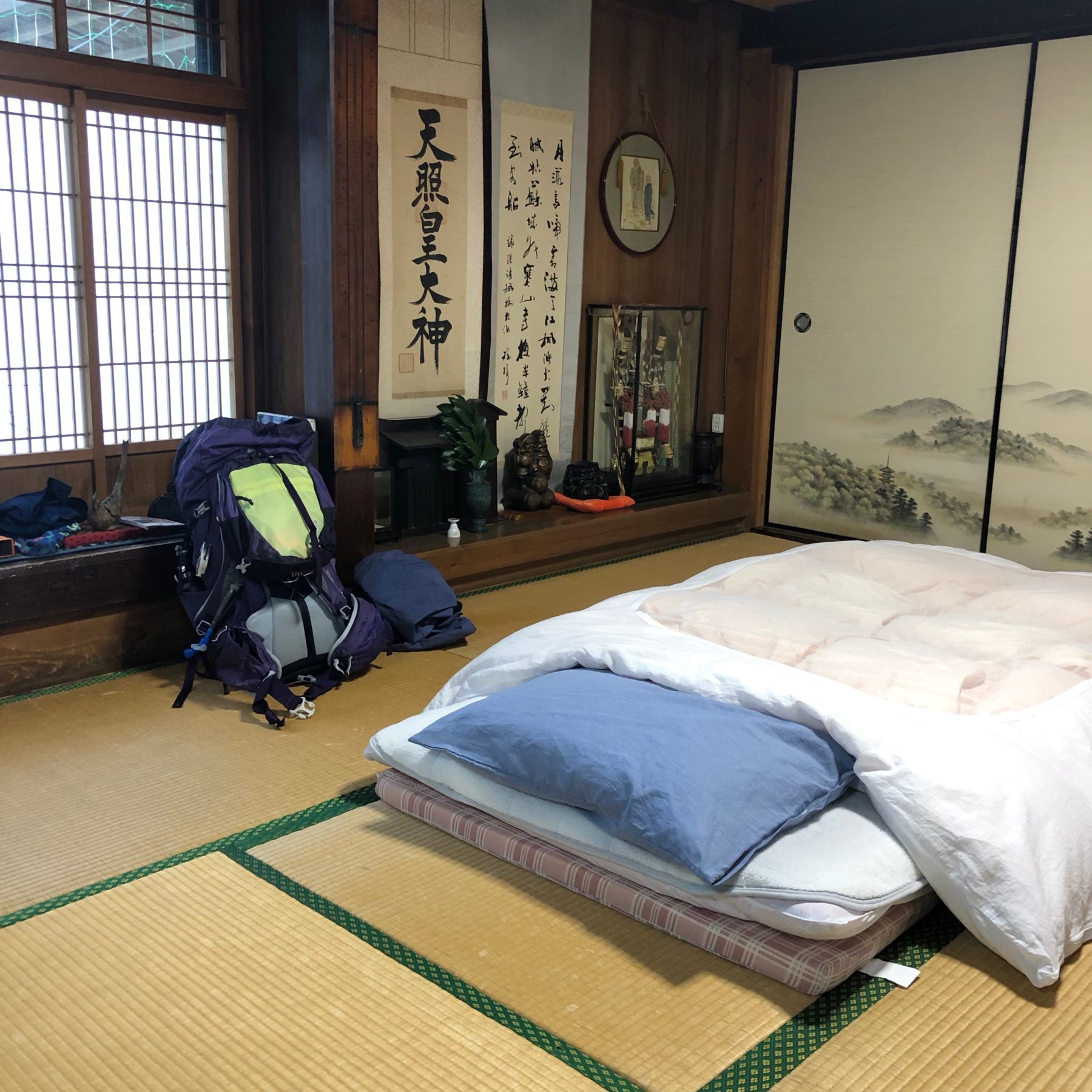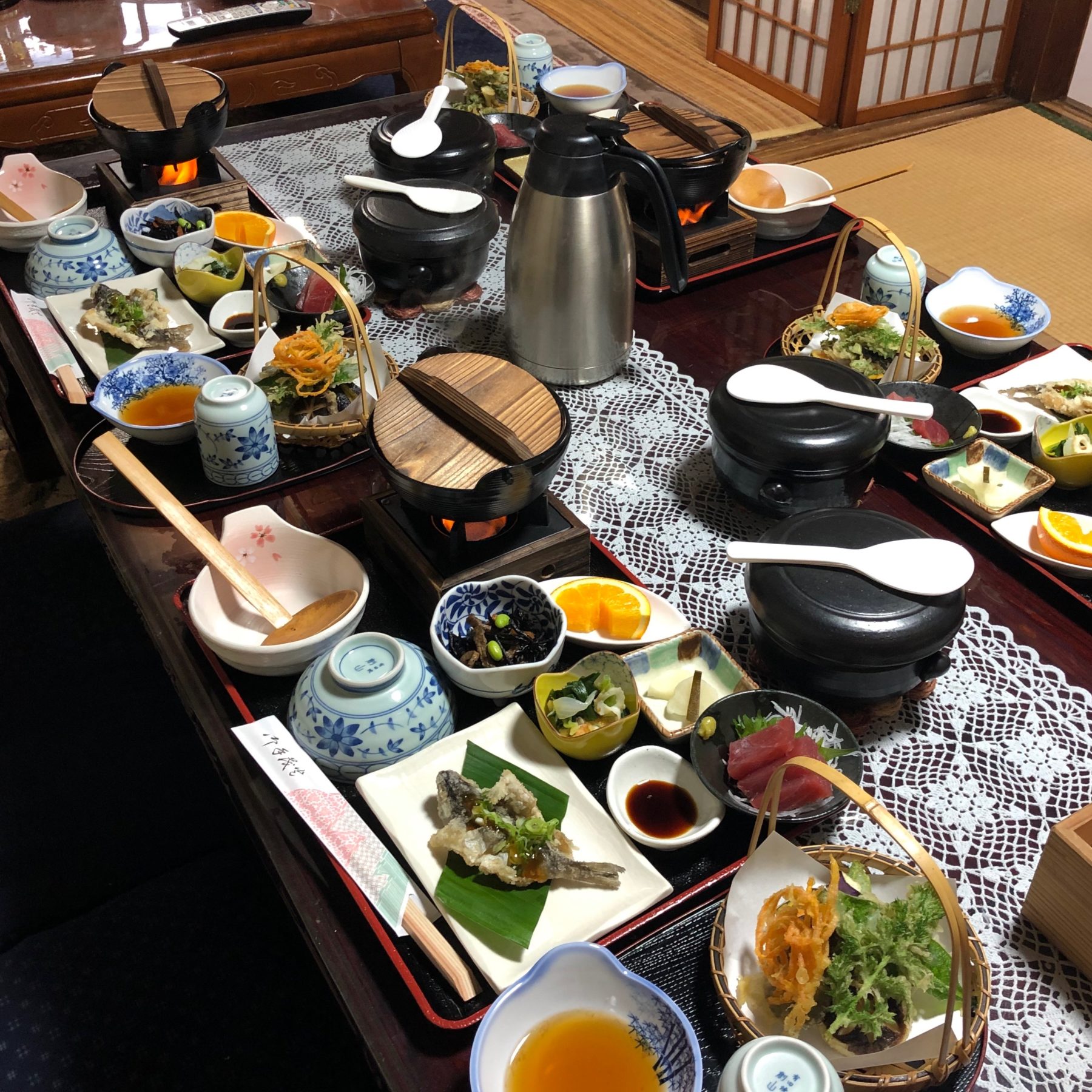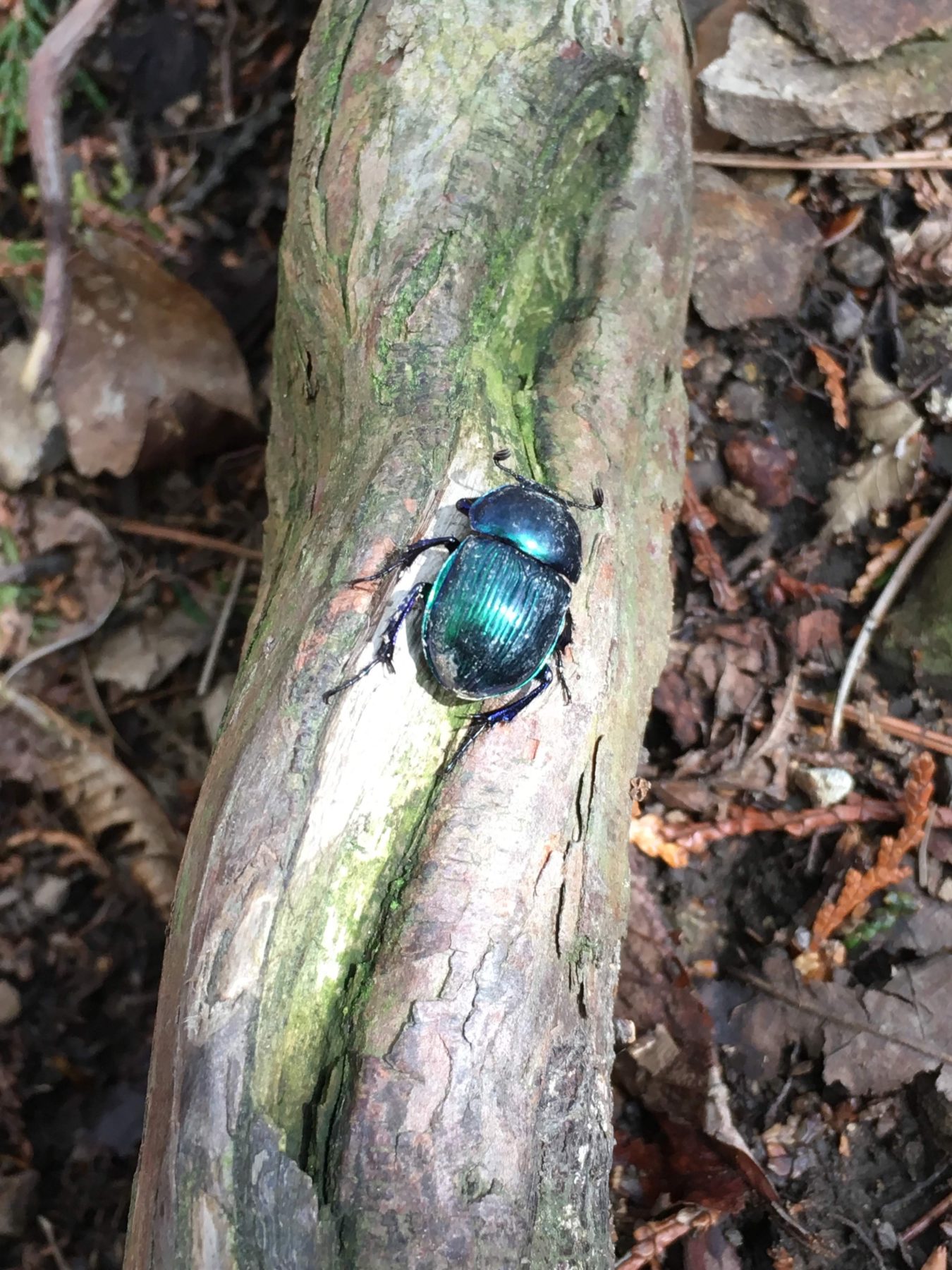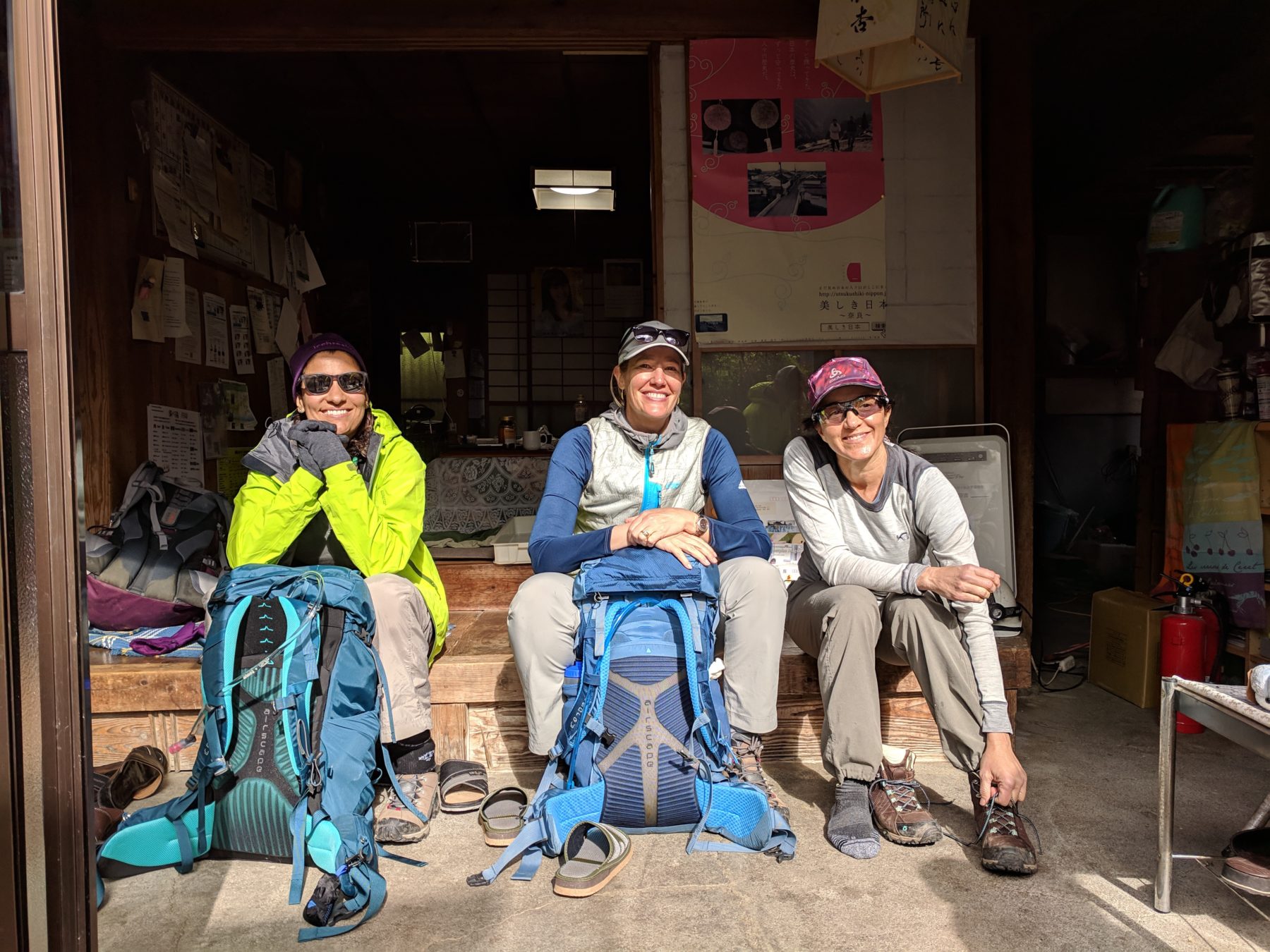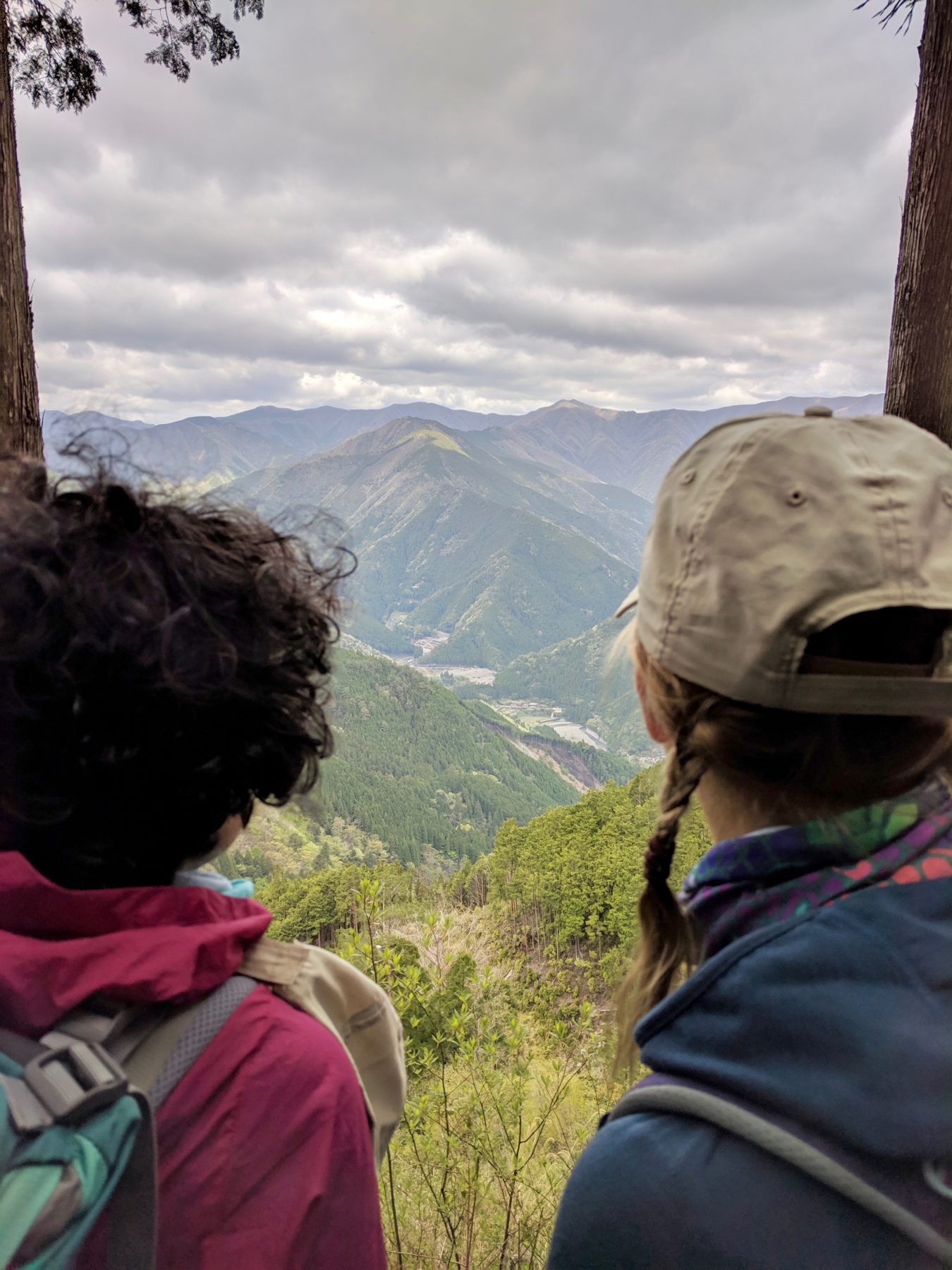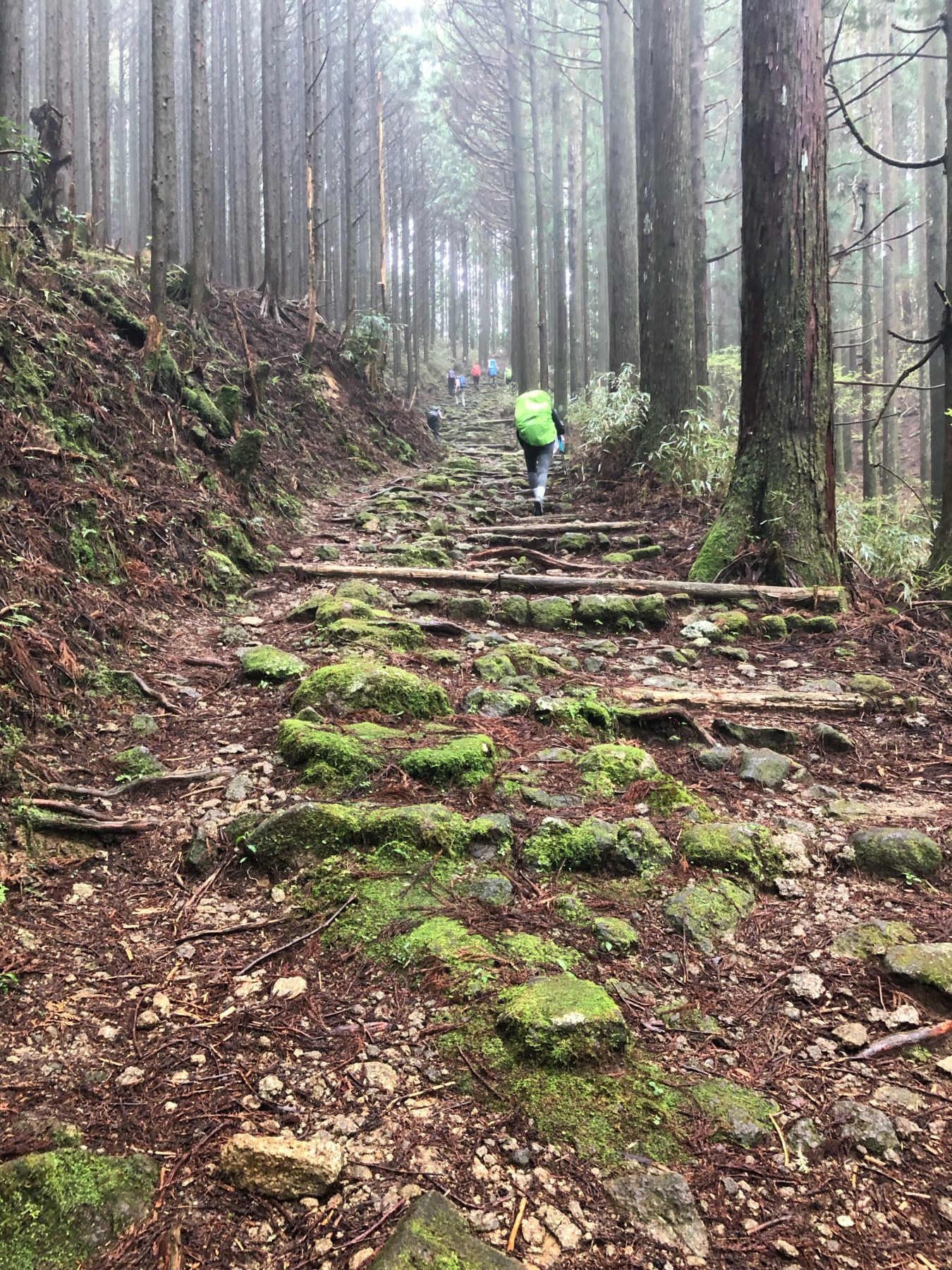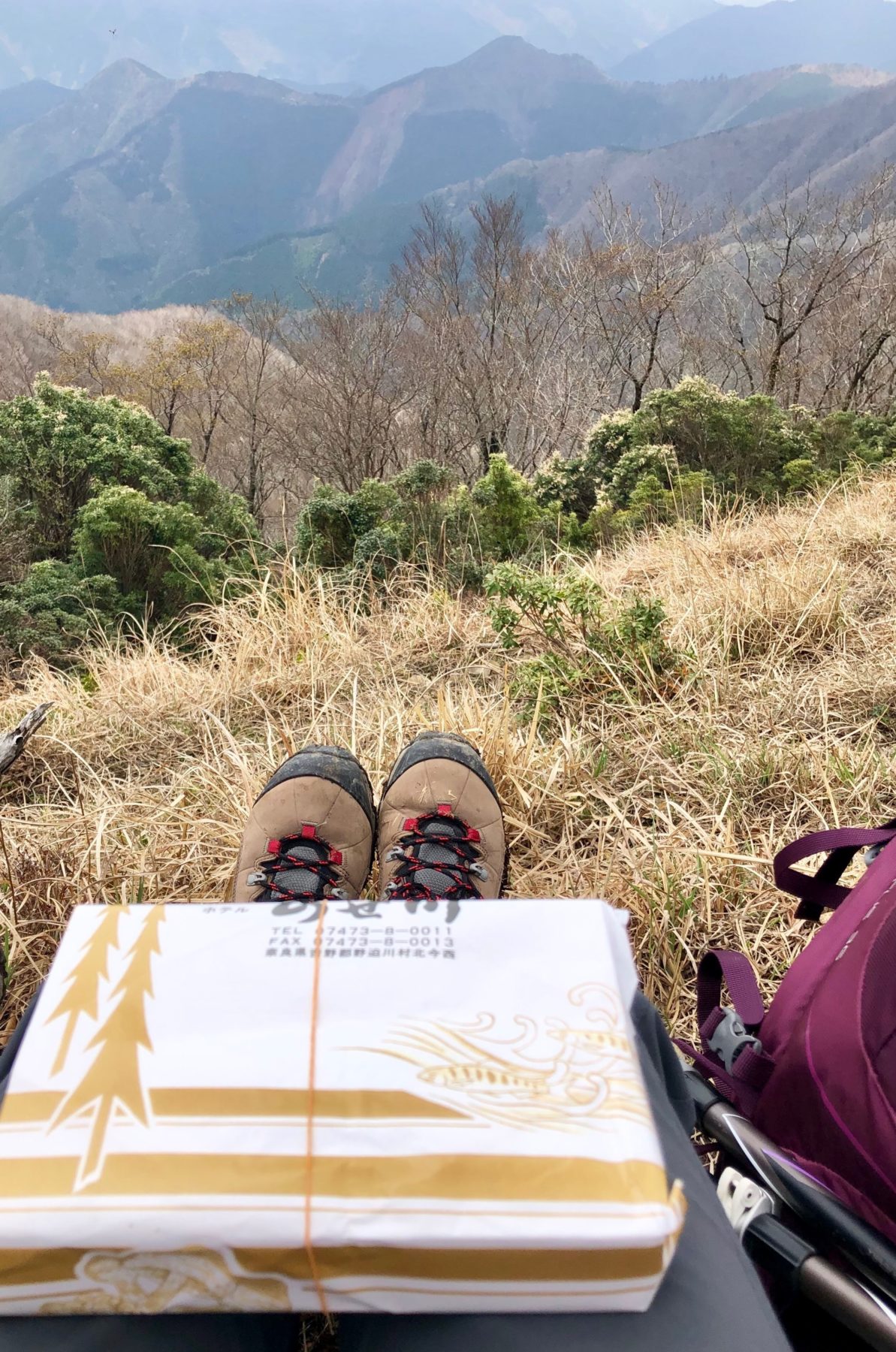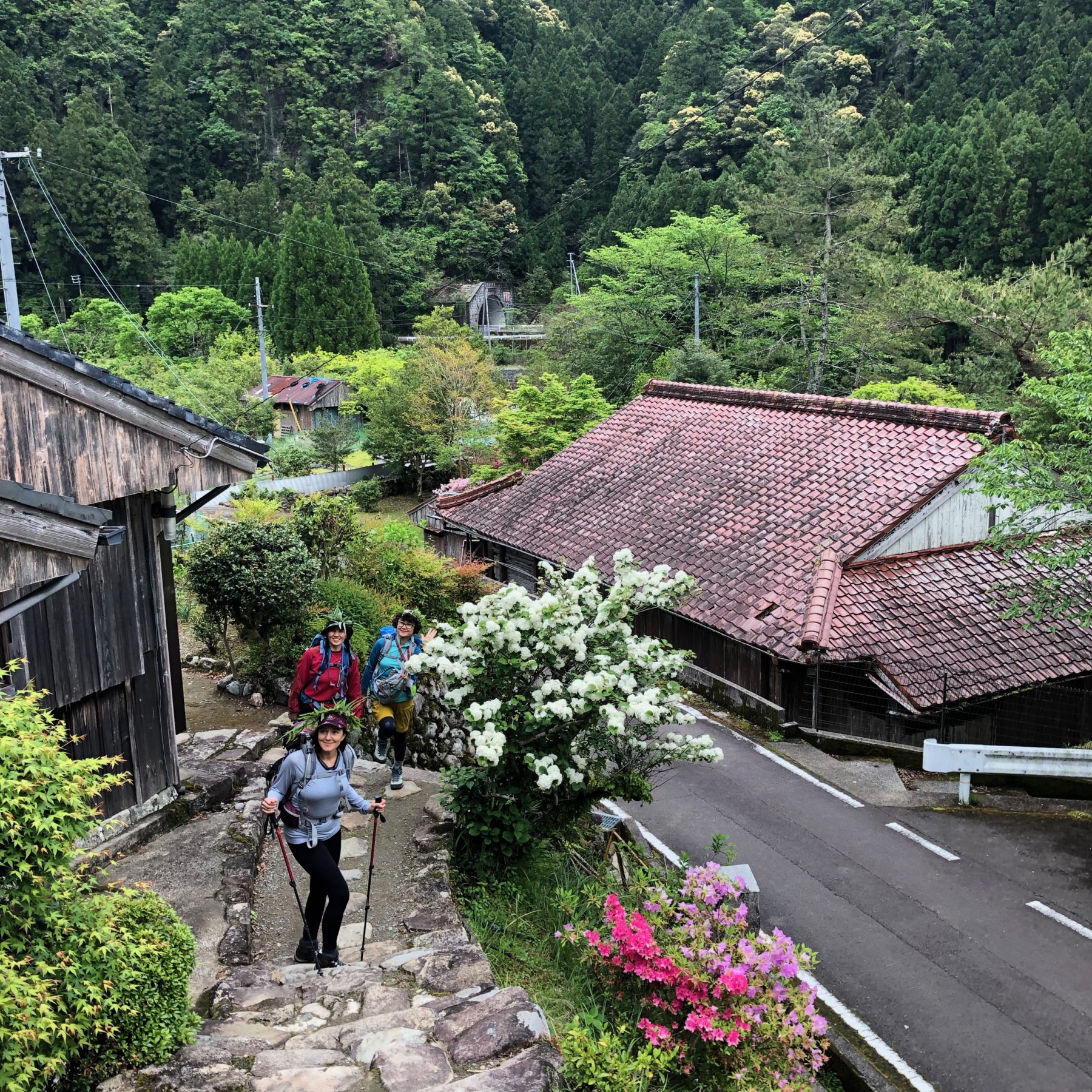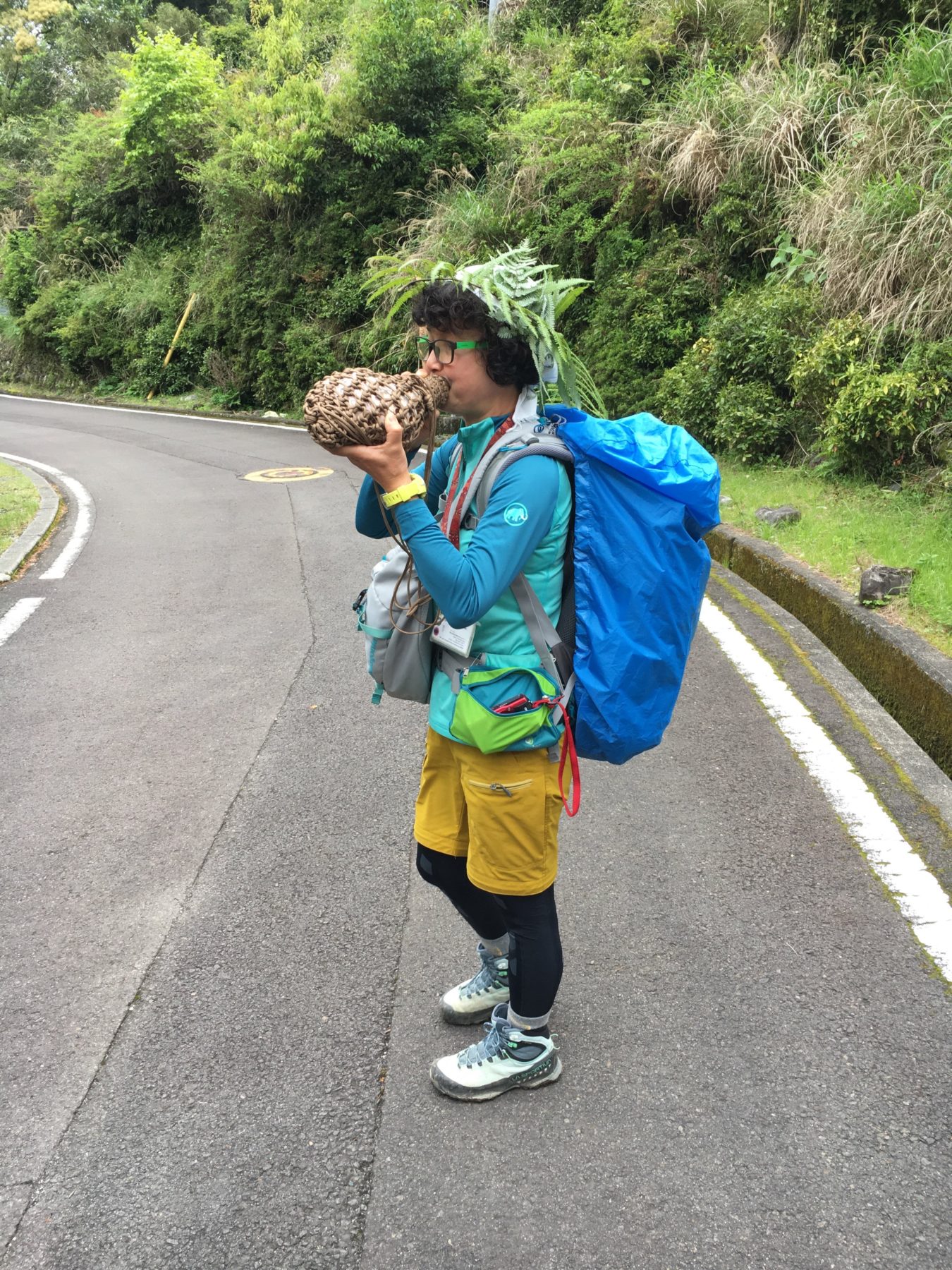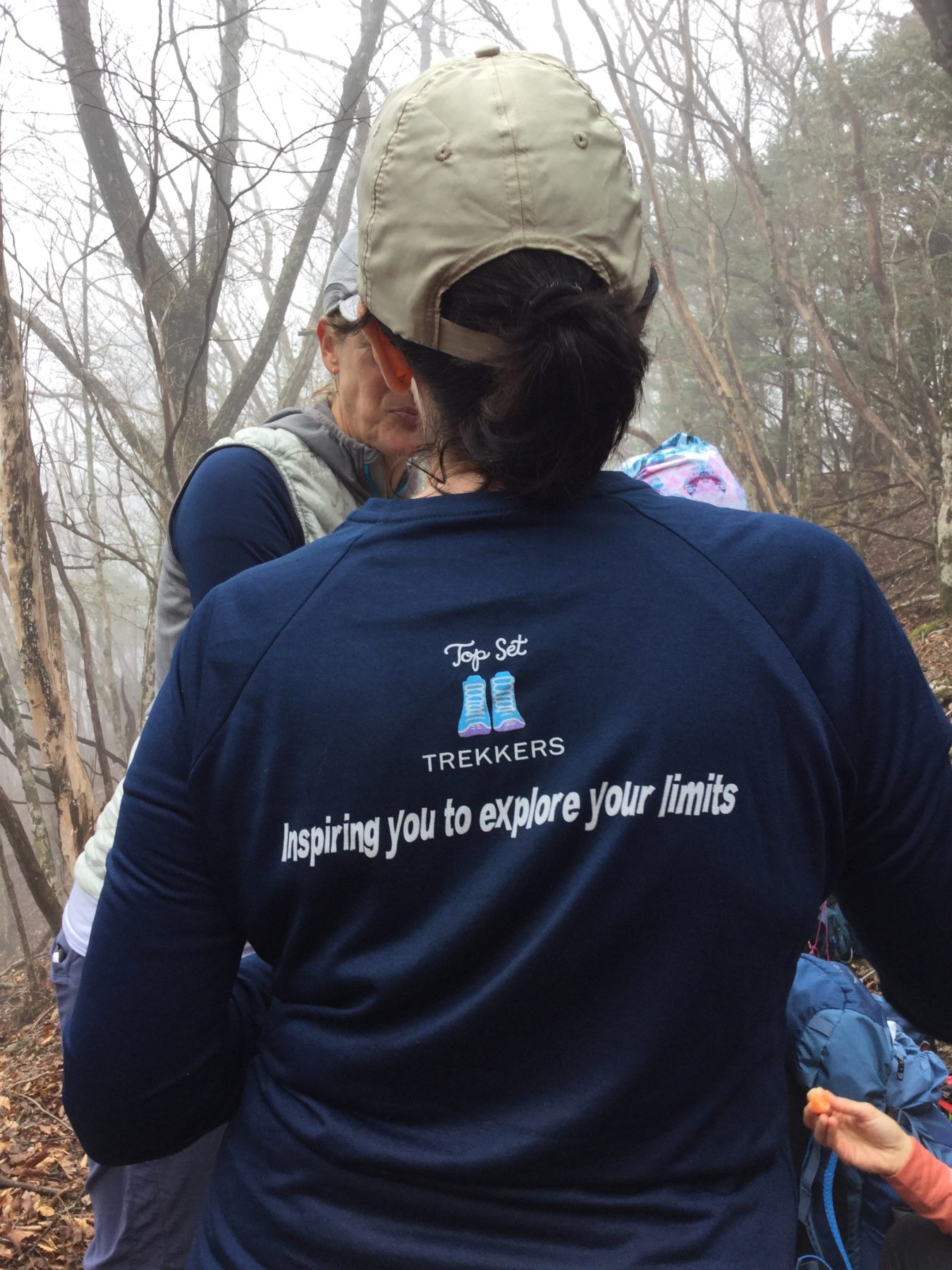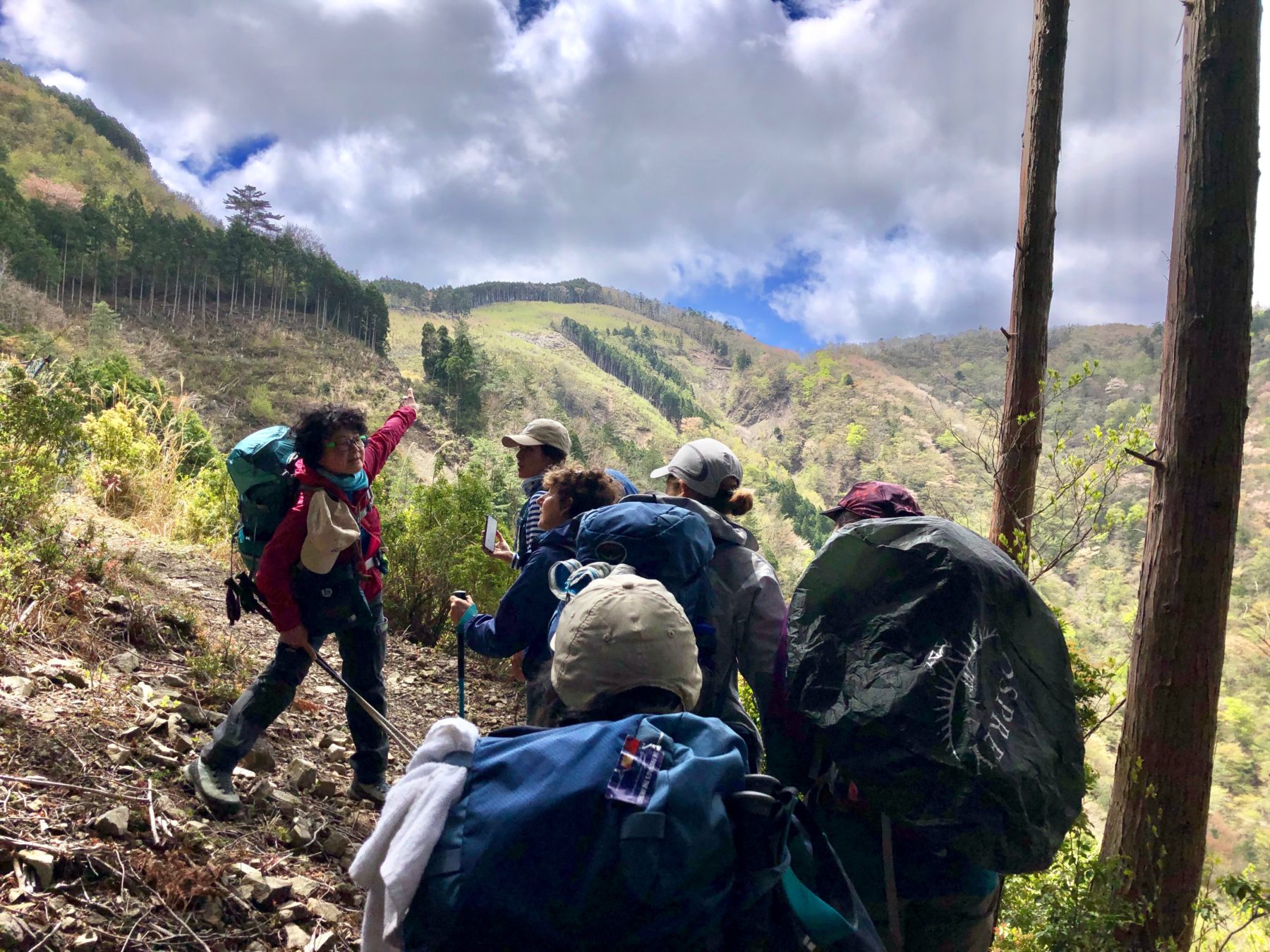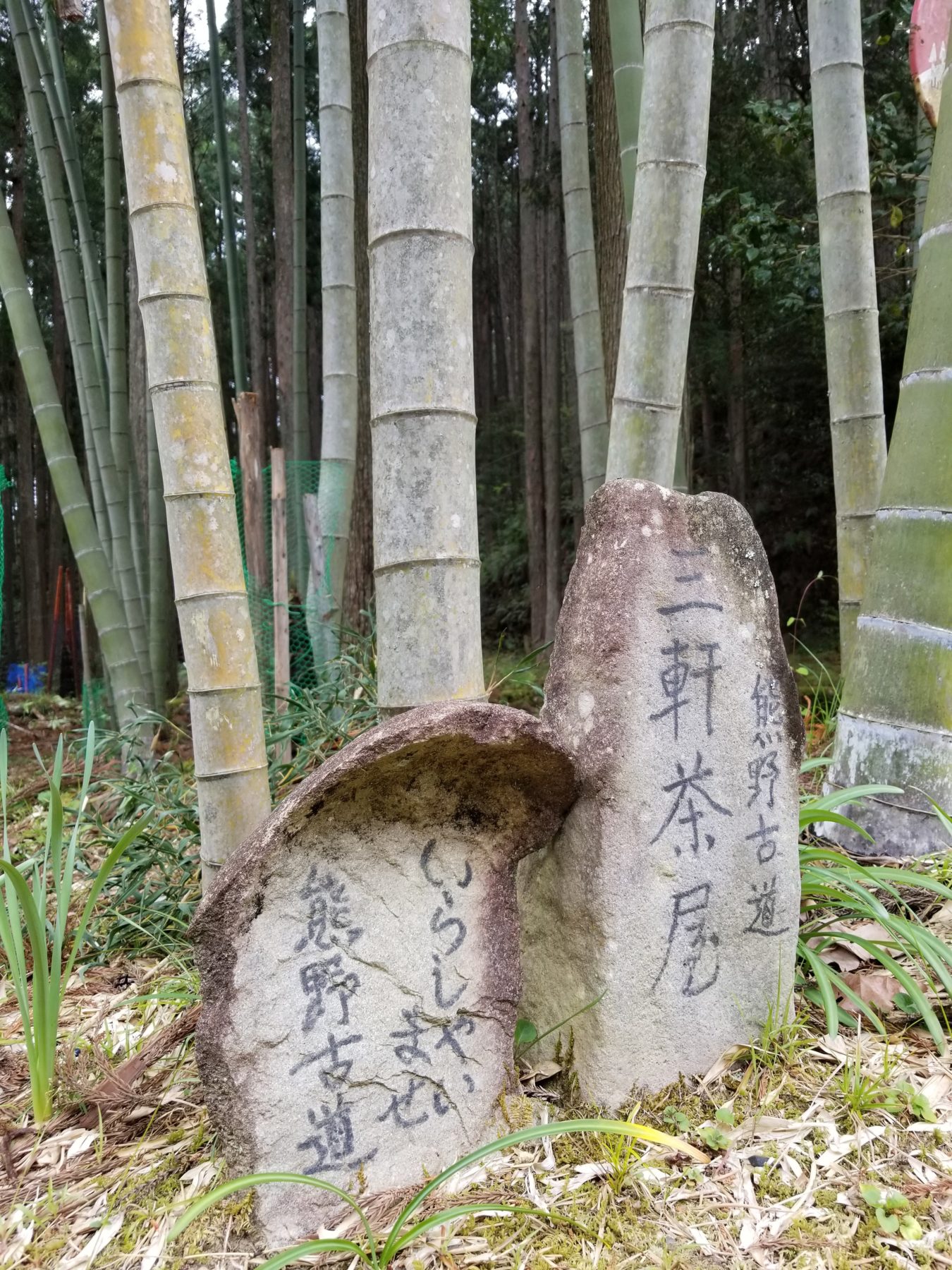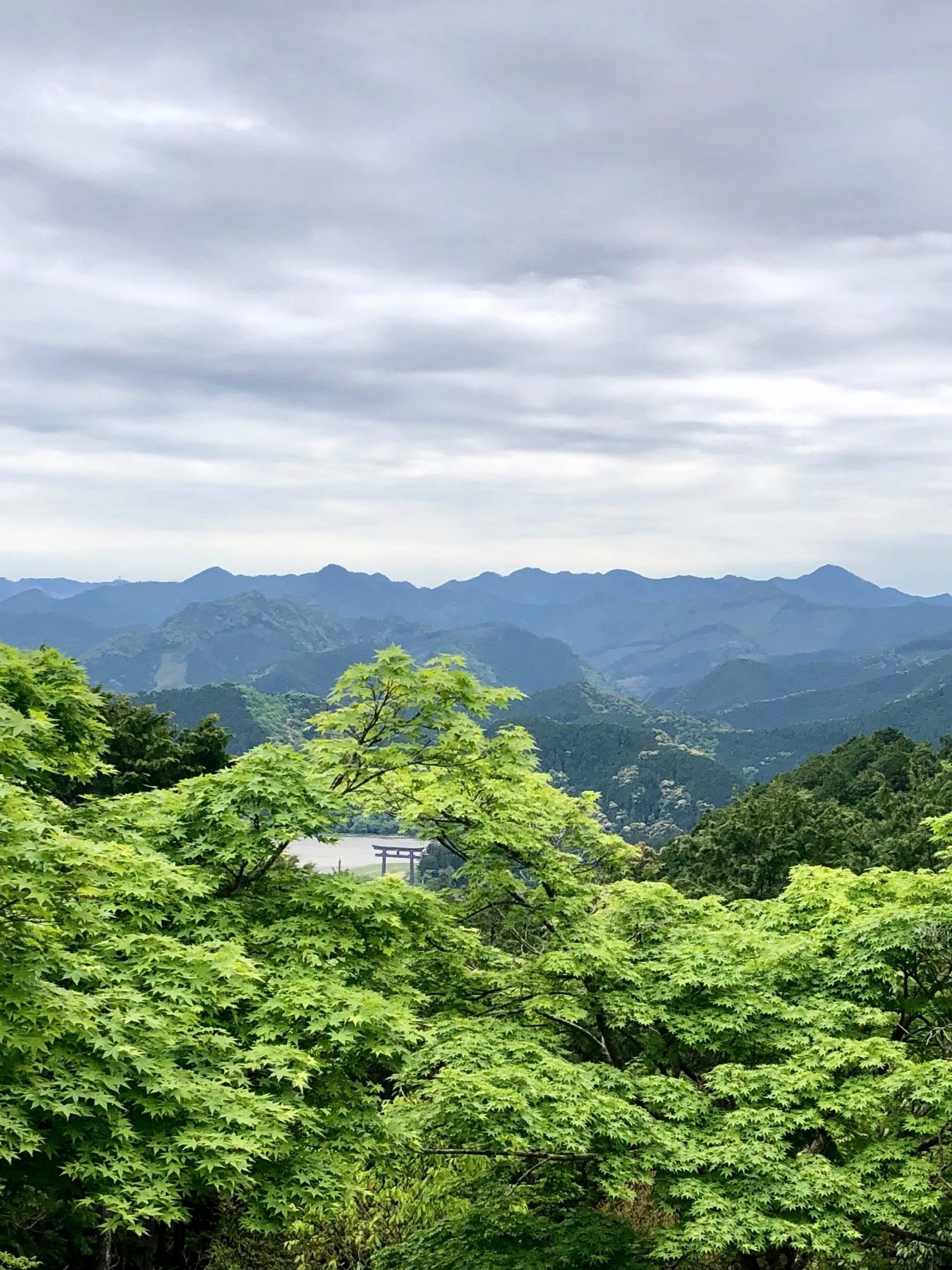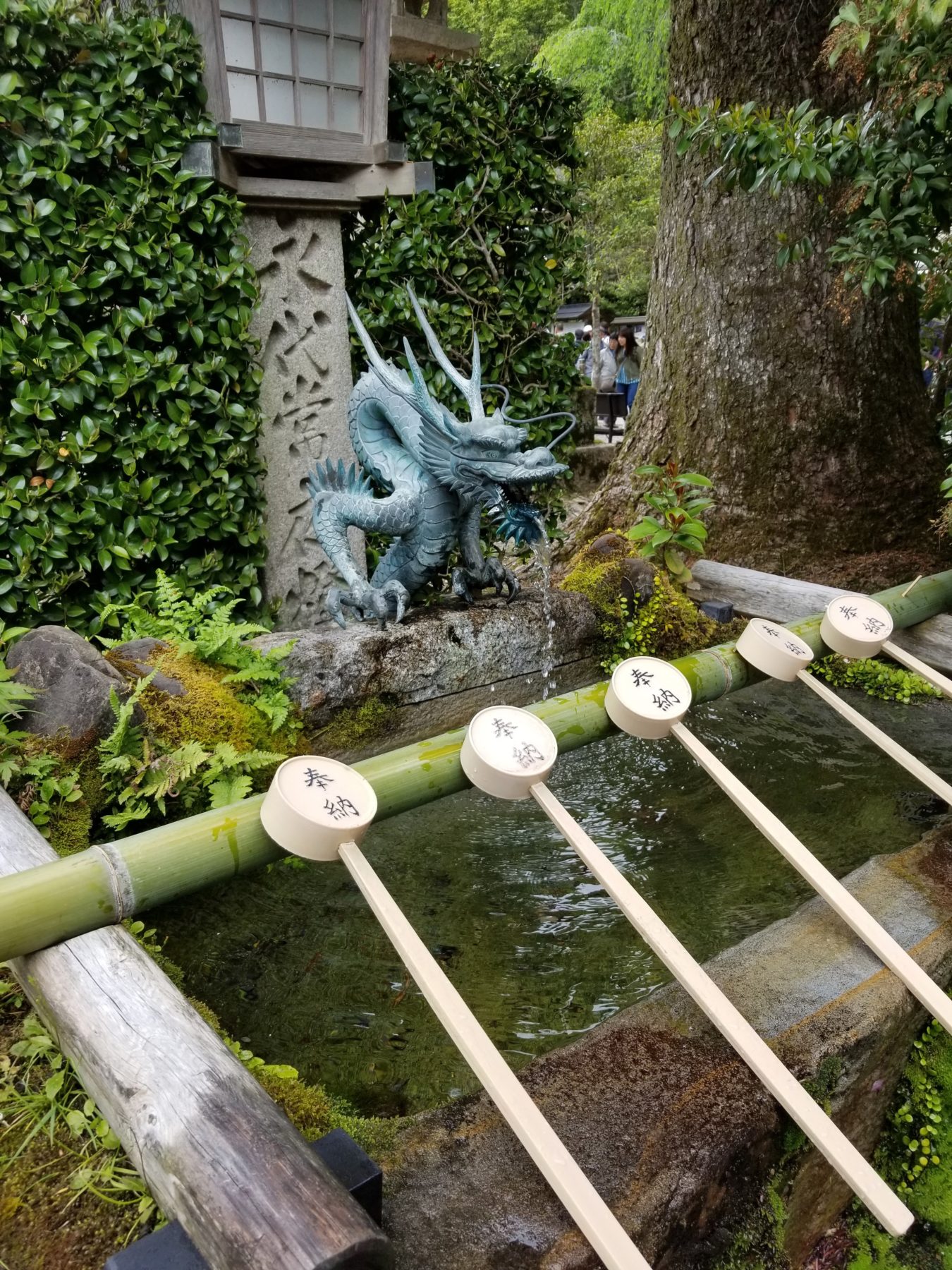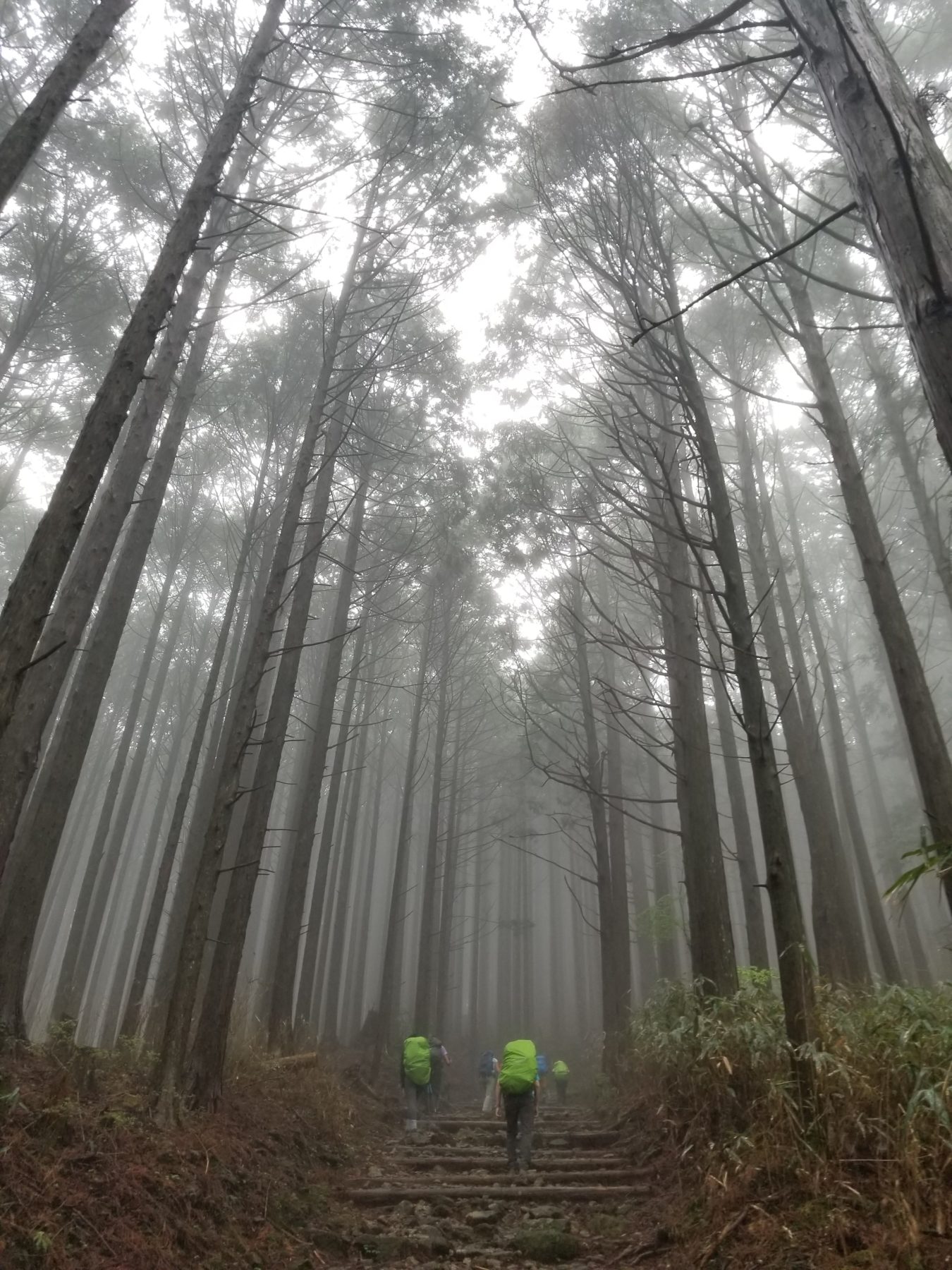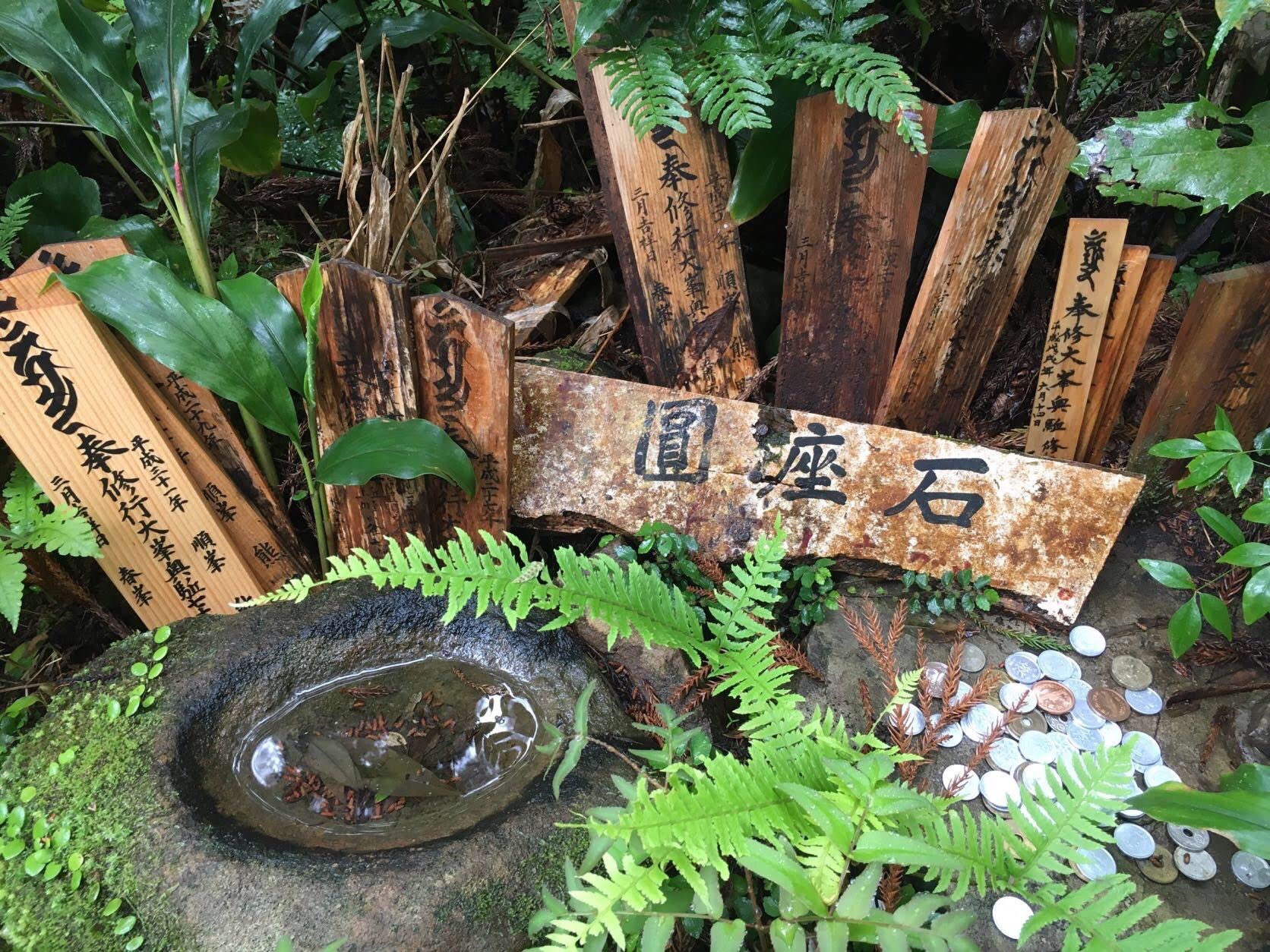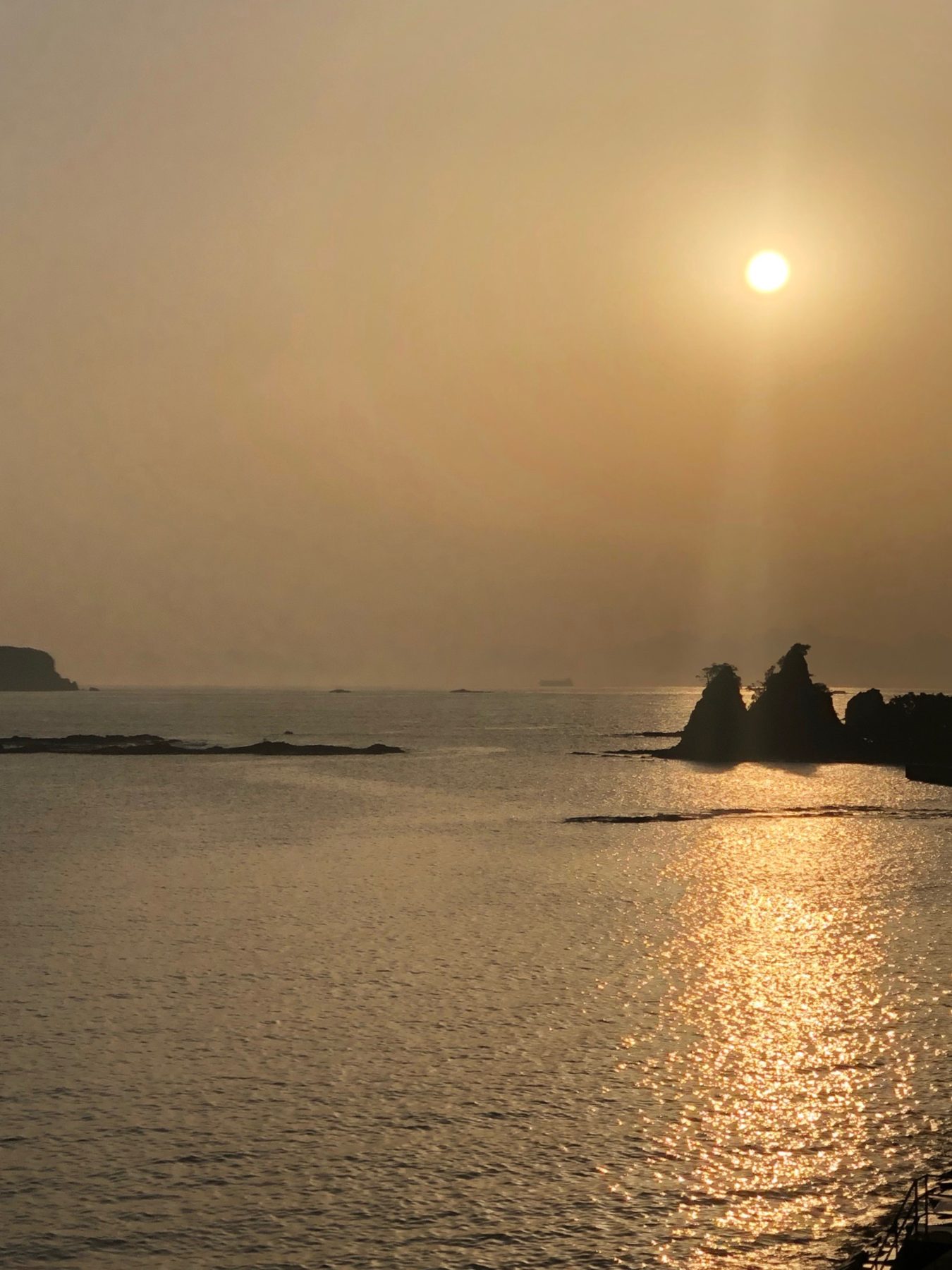Koyasan to Nosegawa: Kumano Kodo Kohechi Route
Japan
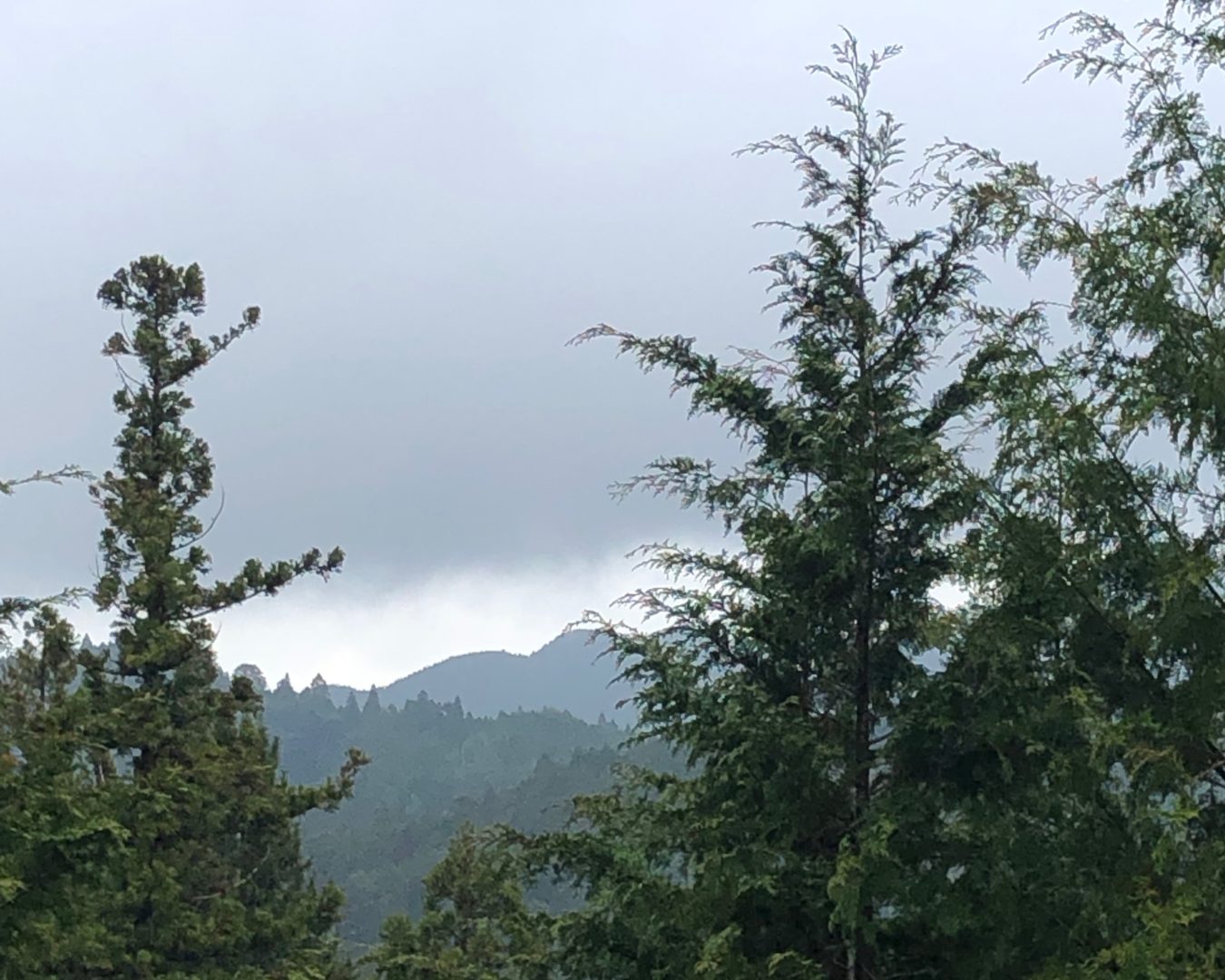
There are five main routes to the Kumano Kodo, a network of trails in the Kii mountains connecting the sacred spiritual sites of ancient Japan. We hiked the Kohechi (Mountainous) Route and the second half of the Nakahechi (Imperial) Route.
.
Hiro shows us our route. Temples in Japan are denoted by the ancient Sanskrit symbol, manji. Because it is sometimes confused with a swastika the country is considering changing this on maps for foreigners in advance of the 2020 olympic games.
This was a journey not just of miles, but also time, more than a millenium. We began with a day of immersion in the remote mountain village of Koyasan. Our lively local docent relayed the history of Kobo Daishi, who brought Buddhism to Japan 1200 years ago, when the Imperial Court of Japan gave Kobo Daishi permission to build this extensive monastic training complex deep in the mountains, isolated from distraction.
We encountered layers upon layers of history and religious tradition, and began to contextualize the very long walk we were about to undertake. This is Okunoin Cemetery in Koyasan, the largest graveyard in Japan. Paths of mossy stones and bridges pass hundreds of thousands of monuments to the deceased and lead to Okunoin, the mausoleum of Kobo Daishi, the monk who brought Buddhism to Japan. Each tier from these five-tier stupa represents one of the five elements of the esoteric Buddhist theory of cosmic order of the universe: earth, water, fire, air, space. The entire tower together represents consciousness.
Together we dare to go further than we would alone. So we ventured out into the strange and unknown. Not just dipping our toes in but going for the deep dive of immersive experience. It was an exploration of place and self.
Our first lodging experience on our trek was in Koyo-San at the Jokiin Buddhist Temple Lodge where we discovered a Japanese heated low table known as a kotatsu. The futon covers the open sides of the table to trap the heat from an electric heating element underneath the table to keep your feet and legs warm.
The most beloved Buddhist deity in Japan, Jizo is the protector of travelers, children and the souls of the deceased. Travelers and parents adorn the statues with hand-knitted beanies and hand-sewn bibs to say thanks. We encountered countless Jizo statues along the trails in Japan and we took time to pause a moment, and offer our respects for keeping us safe on our travels. 🙏🏼
The Kumano Kodo is one of two UNESCO World Heritage pilgrimage routes, the other being the Way of St. James (Camino de Santiago). A “Dual Pilgrim Passport” program was created to celebrate and honor those who complete both pilgrimage routes. There are 2 sides to the passport, one for the Kumano Kodo and the other for the Way of St James. Pilgrims collect stamps along the trail as a record of the walk. Some days we saw just one stamping station while other days we earned four stamps!
“Good morning. Please remember, even one grain of rice has a power of the universe. Please remember, even one drop of water contains heaven and blessings. Please appreciate nature. Enjoy your breakfast.” ~Jokiin Temple Lodge
Camping at will is not allowed on the Kumano Kodo. We left the forest and trail after each segment, coming out of the woods each night to a new village. In this case it was a very remote one with no amenities. There was one road, no stoplight, one tiny (closed) shop attached to the house closest to the road. Our only option was to stay with locals who are equipped for welcoming pilgrims, of which there are only a handful.
Our homestay (minshuku) in that village with no amenities was the nicest place we stayed, confirming our bias that the most worthwhile places to visit require significant effort to reach.
.
Blissfully quiet, our comfy, clean tatami rooms opened to a courtyard lush with flowers and a water wheel fountain. To get there from the trailhead the host drove us down a riverbank, across, through, and along the river on a not-road, to their tiny hamlet of three homes with extensive gardens, chicken coops, and a helipad. I asked what the helipad was for and our host-mama-san replied: medical help. You may have noticed we are very remote here.
And the food! We ate like queens, each meal a masterpiece of artfully plated elements, regional variety and seasonal specialties presented with thoughtful precision.
Slow down so much you notice what you notice.
For the first few days of the Kohechi we arrived at a vantage point from which it was possible to look back at the peaks and ridges we had traveled the previous day.
If you’ve left nothing on the table and exit the woods fully exhausted, you’re doing it right.
Kawayu Onsen, Japan
THIS WOMAN .. In retrospect, sometimes the highlight of a trip isn’t where you walked or what you saw but who you met. @kyoko_vendome is not only a remarkable artist, successful on a large scale but also known in the region for giving back, financially supporting trail maintenance and designing graphics that promote tourism to the historic sites of Kumano Hongu. With her joy, enthusiasm, local knowledge and boundless energy it’s no surprise she is in high demand as a mountain guide for the limited number of engagements she does each year.
@kyoko_vendome is not only a remarkable artist, successful on a large scale but also known in the region for giving back, financially supporting trail maintenance and designing graphics that promote tourism to the historic sites of Kumano Hongu. With her joy, enthusiasm, local knowledge and boundless energy it’s no surprise she is in high demand as a mountain guide for the limited number of engagements she does each year.
Hike-U: . Nature and trekking . Journey to Enlightenment . Kumano Kodo . – Missy Mans .
An ancient pilgrimage route from Koya-san to Nachi-Katsuura, the UNESCO-listed Kumano Kodo is a physically challenging cultural exploration of spiritual Japan through the breathtaking cedar and cypress forests of the Kii peninsula. For access to monastic temples, rural homestays and traditional ryokan we took the less-frequently traveled Kohechi route before confronting the celebrated never-ending steps of the popular Nakahechi route, paying 5 yen coins to each attentive Jizo statue protecting us en route. The relentless hikes were rewarded with evening soaks in the healing mineral waters of local onsen. A true pilgrimage experience, the serene and thoughtful landscape filled us with spiritual well-being and gave us respite from the modern world.
Japan

Nara, Japan

Nara, Japan
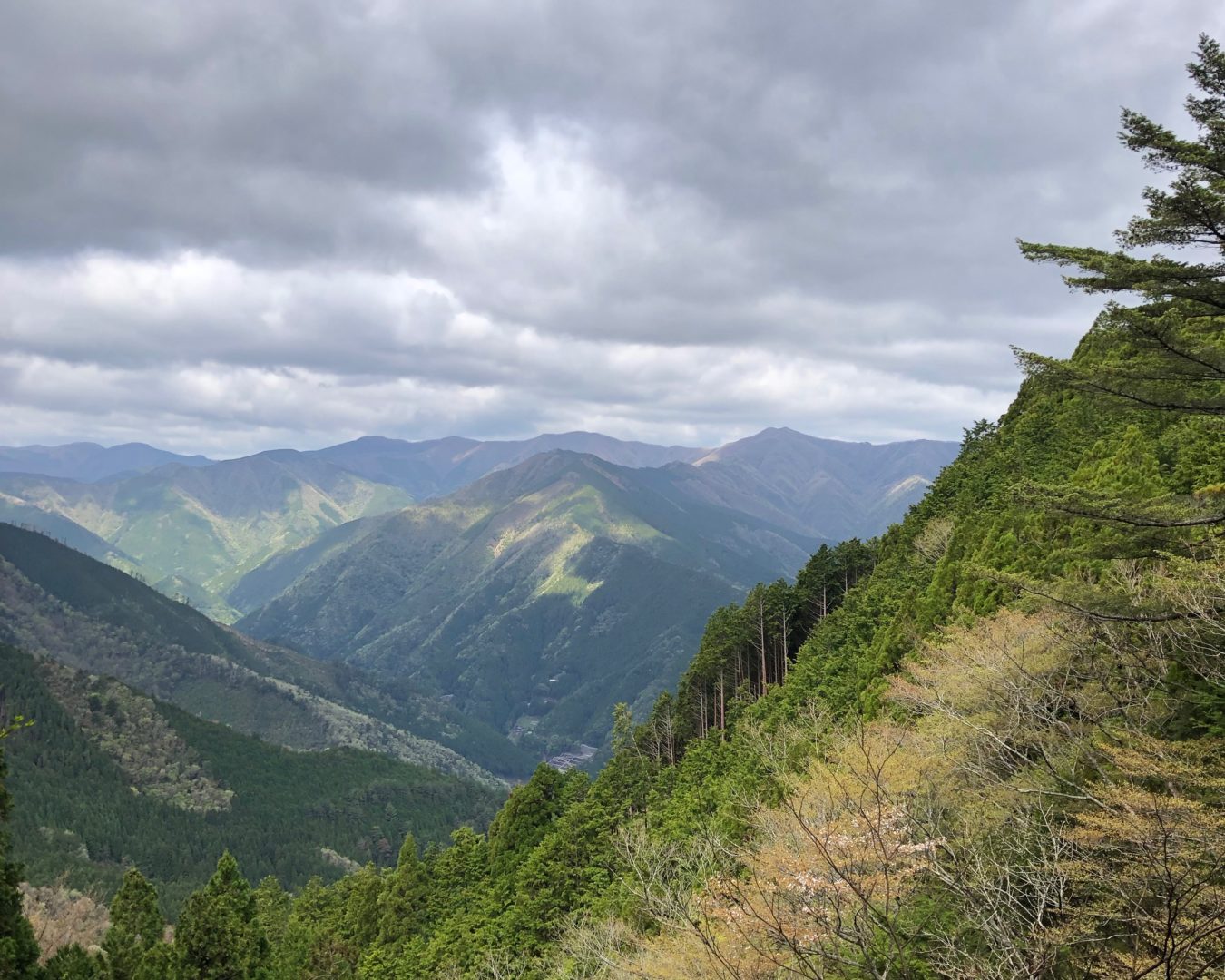
Wakayama, Japan
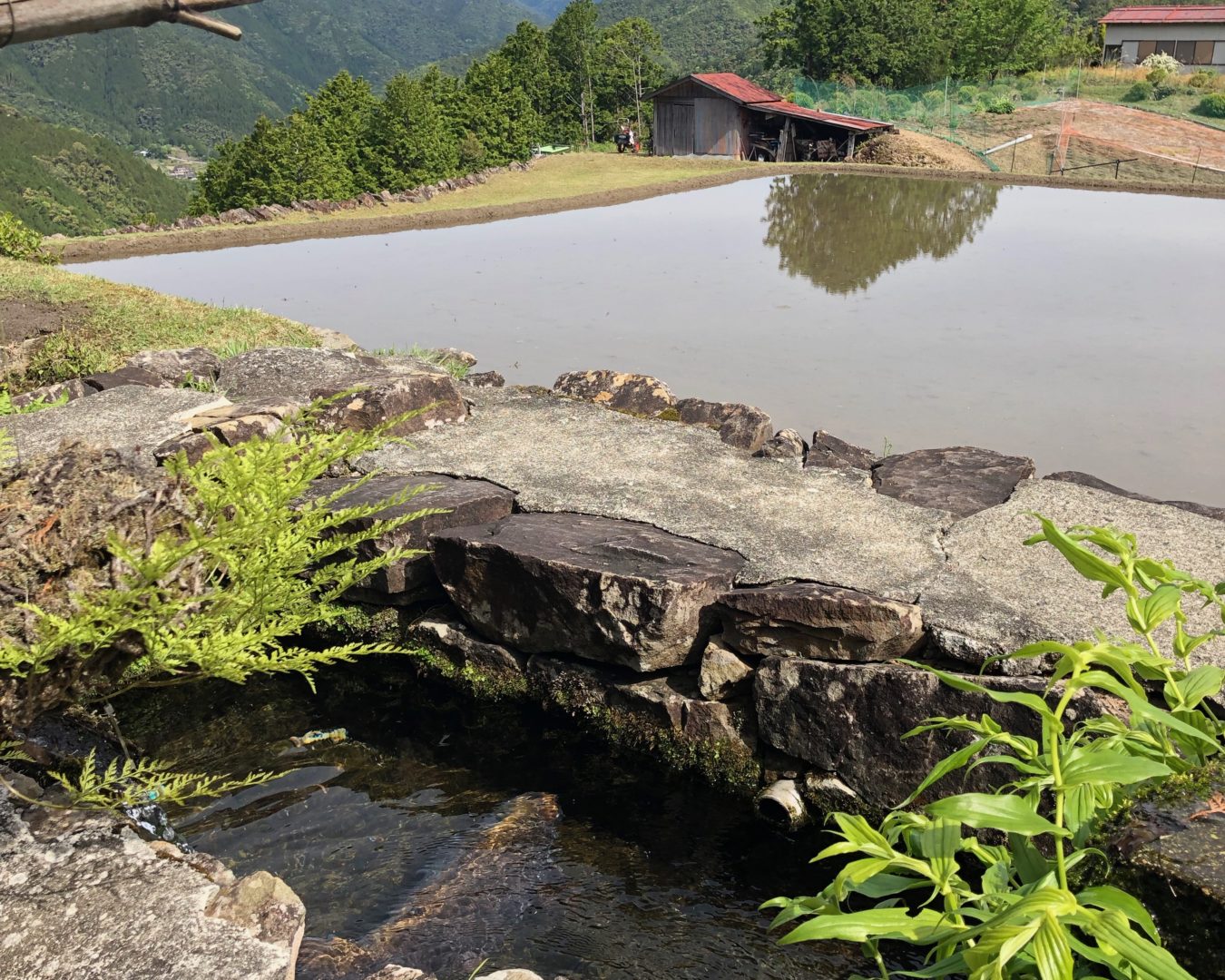
Japan
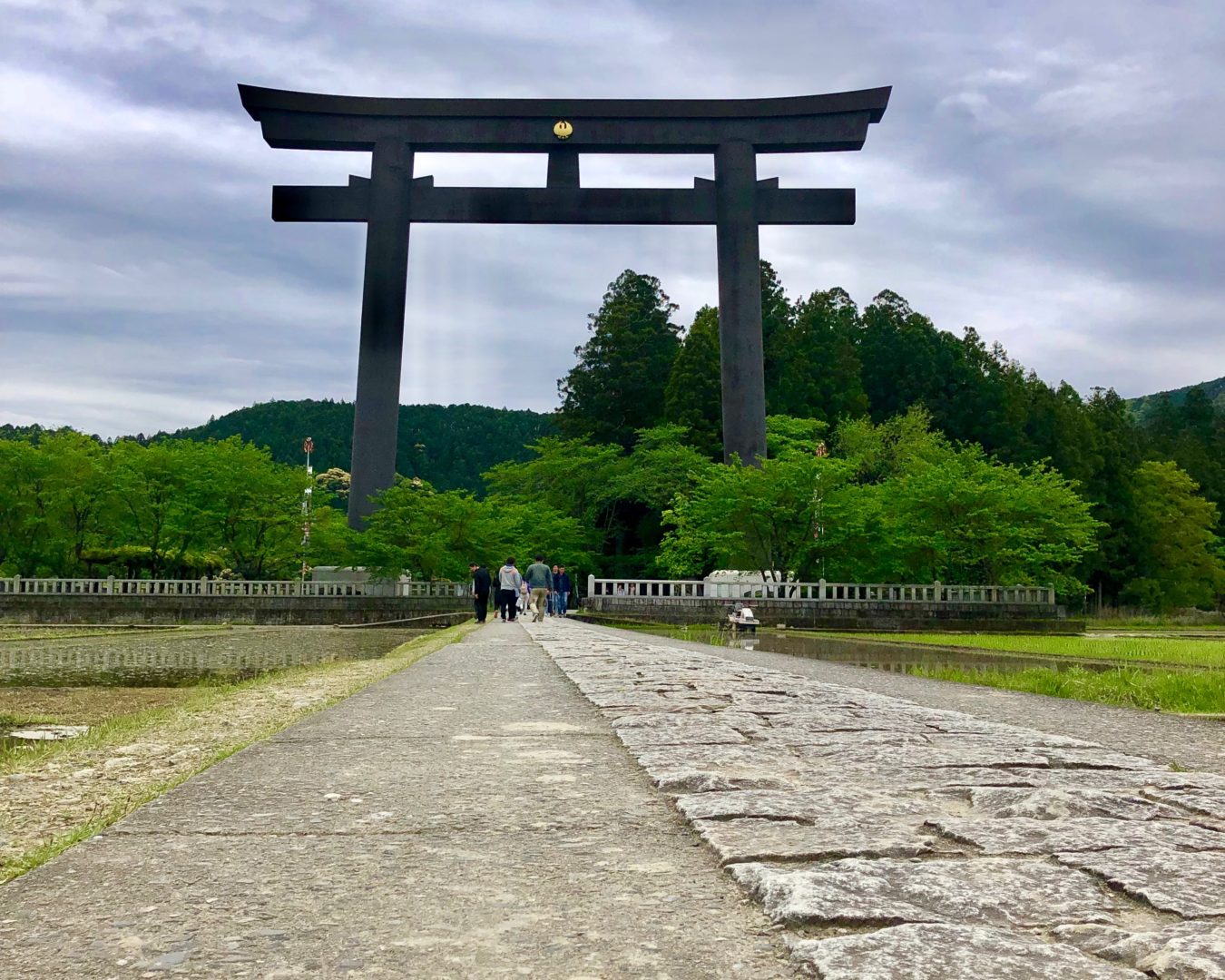
Wakayama, Japan
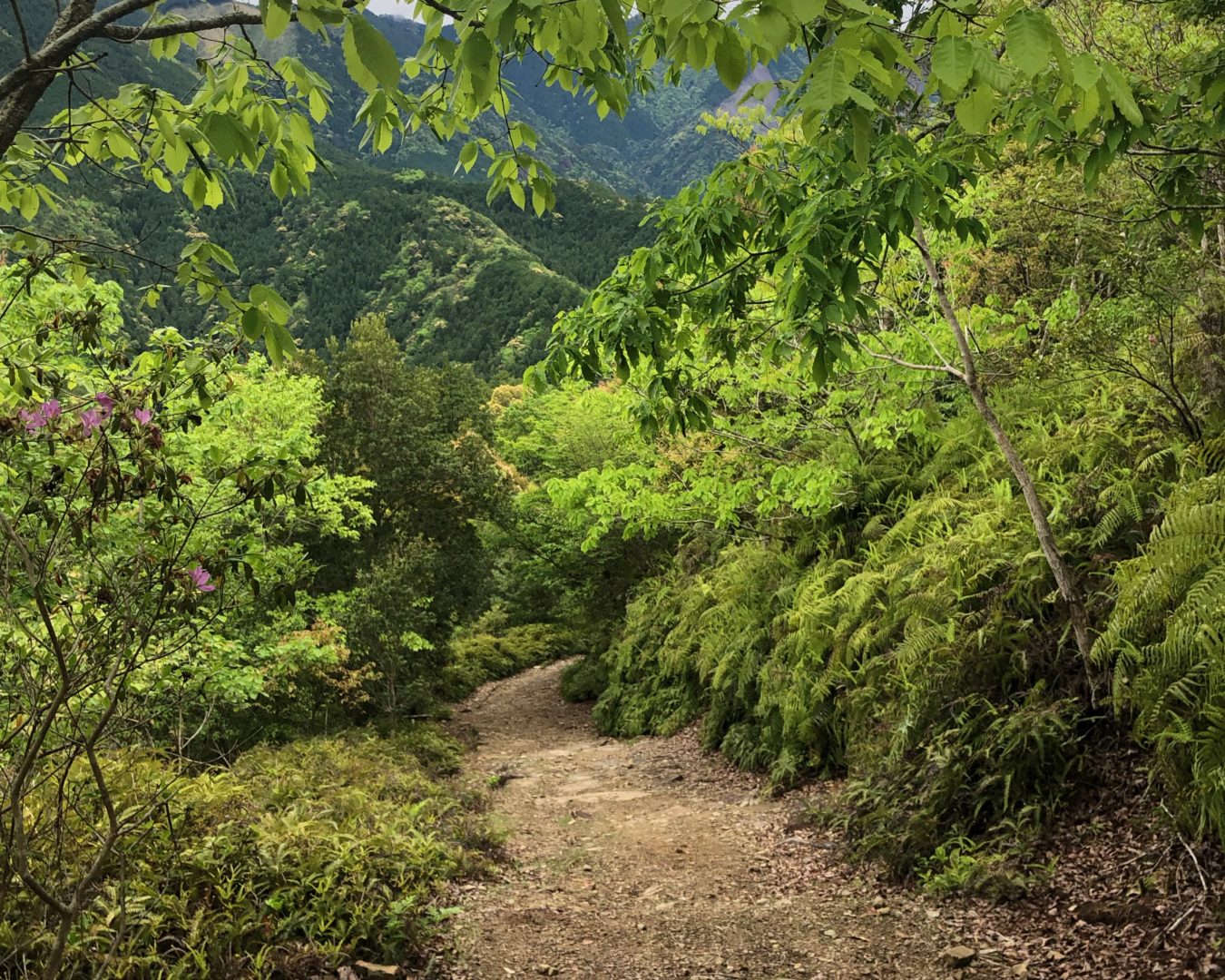
Wakayama, Japan
